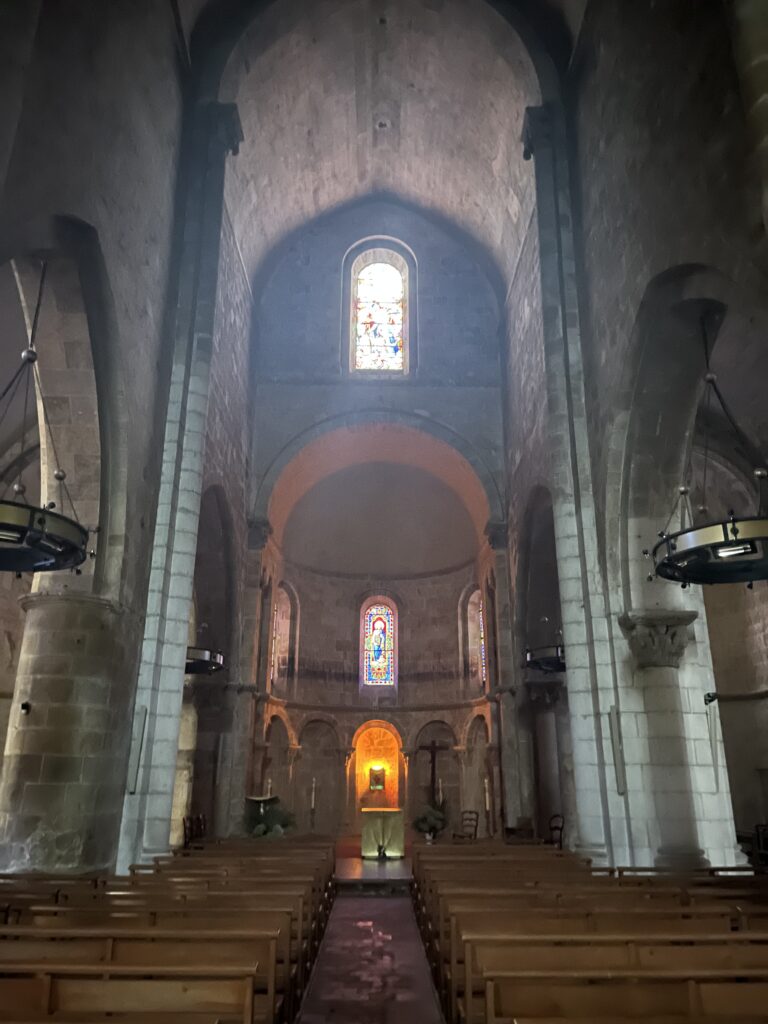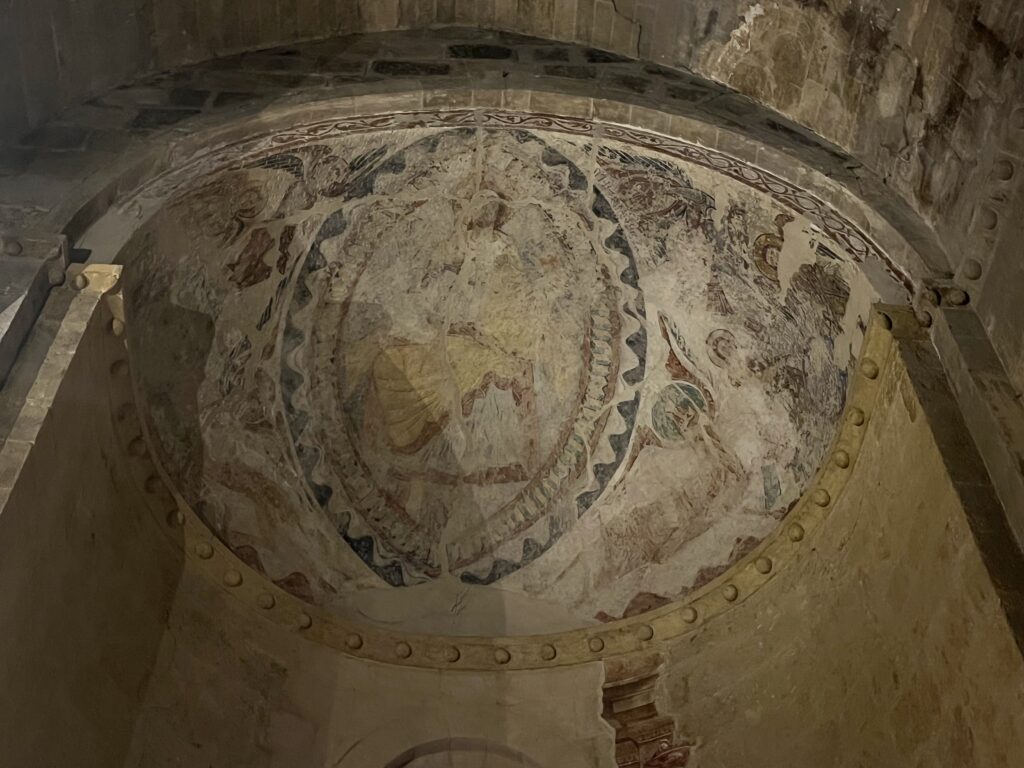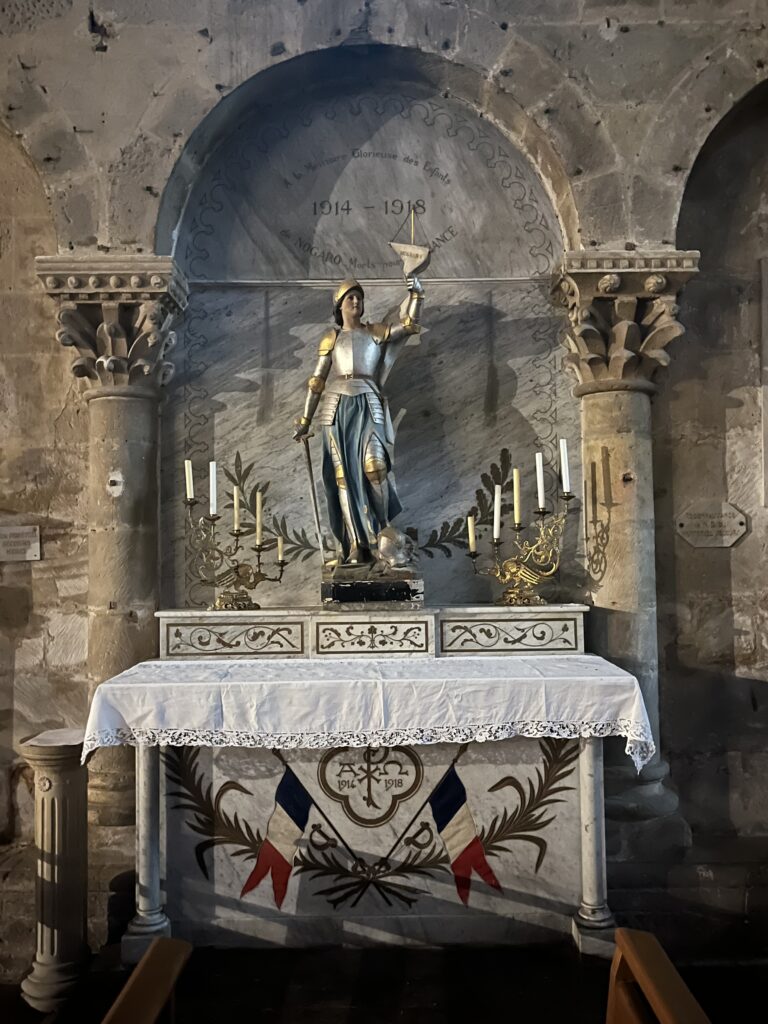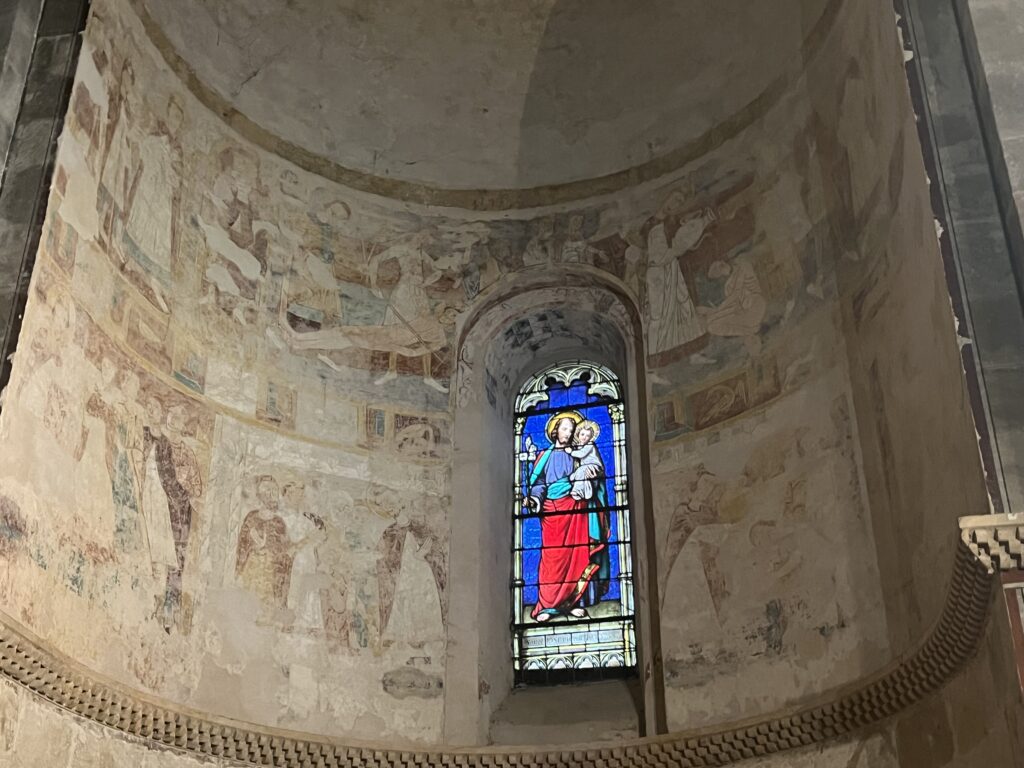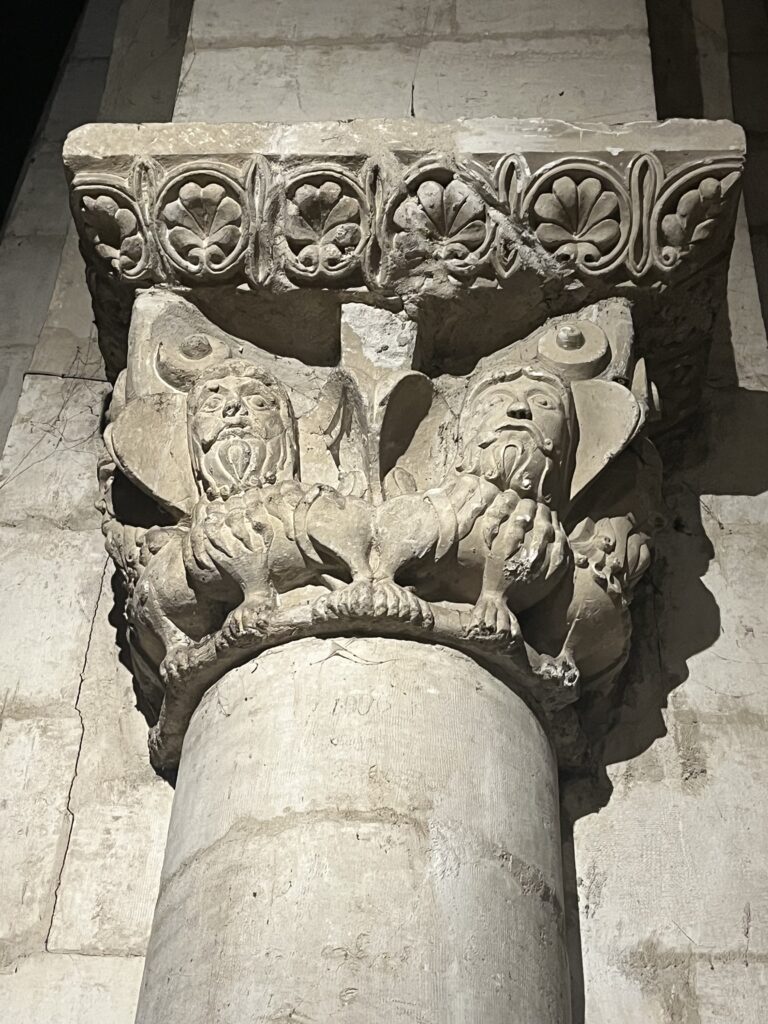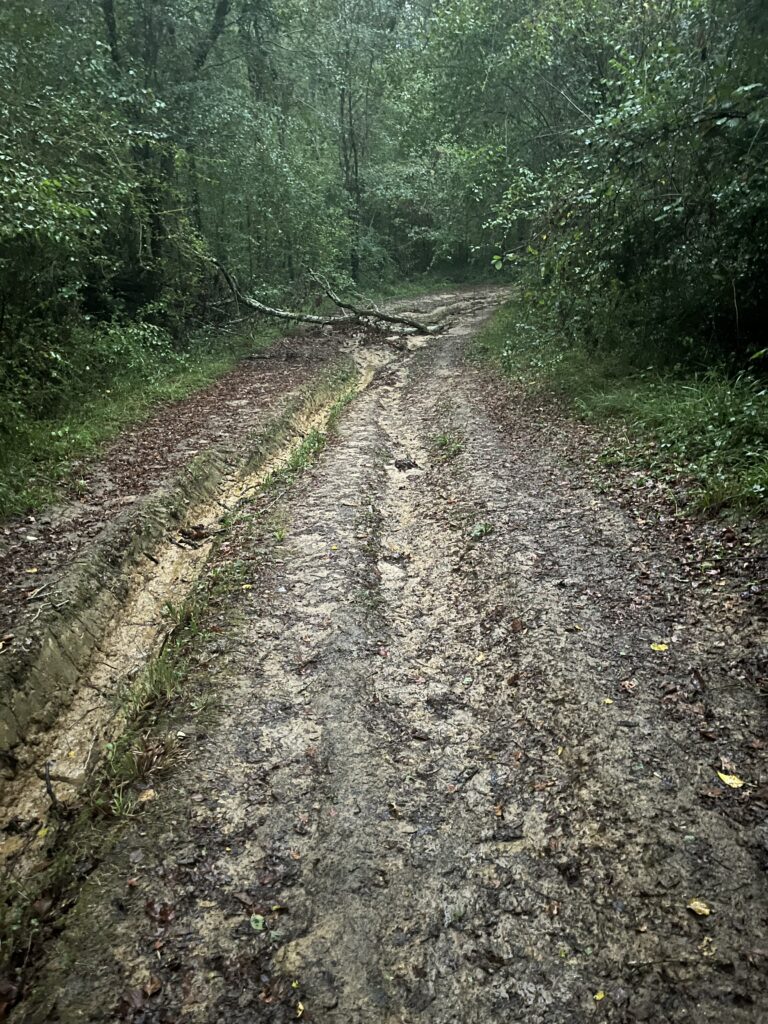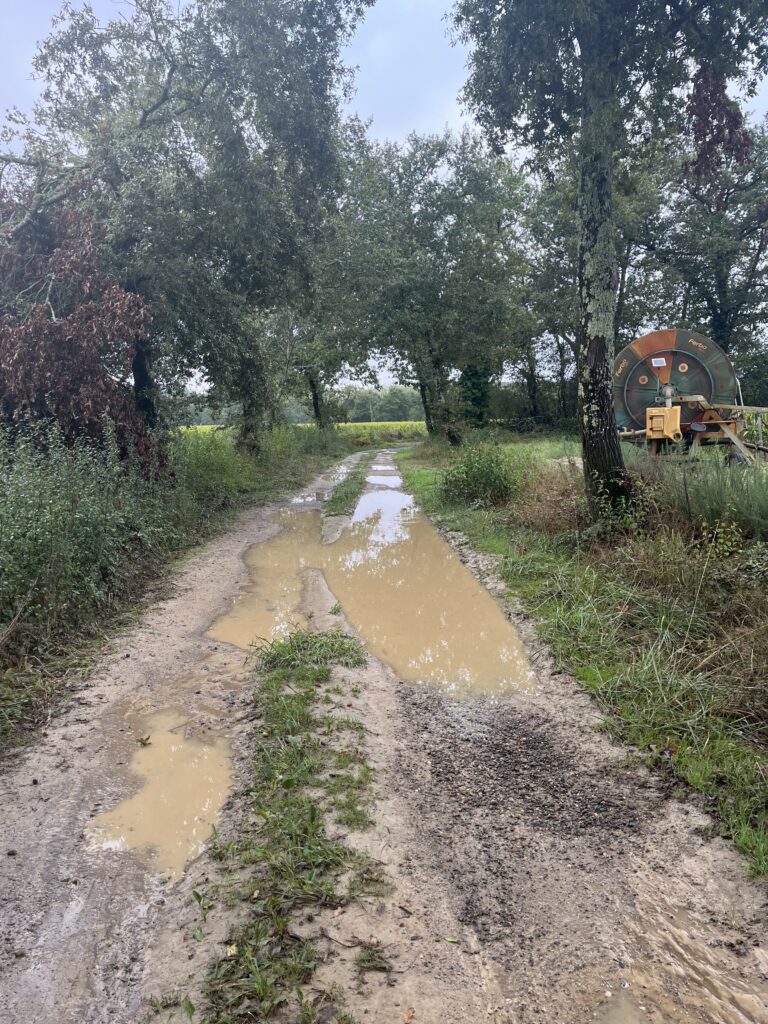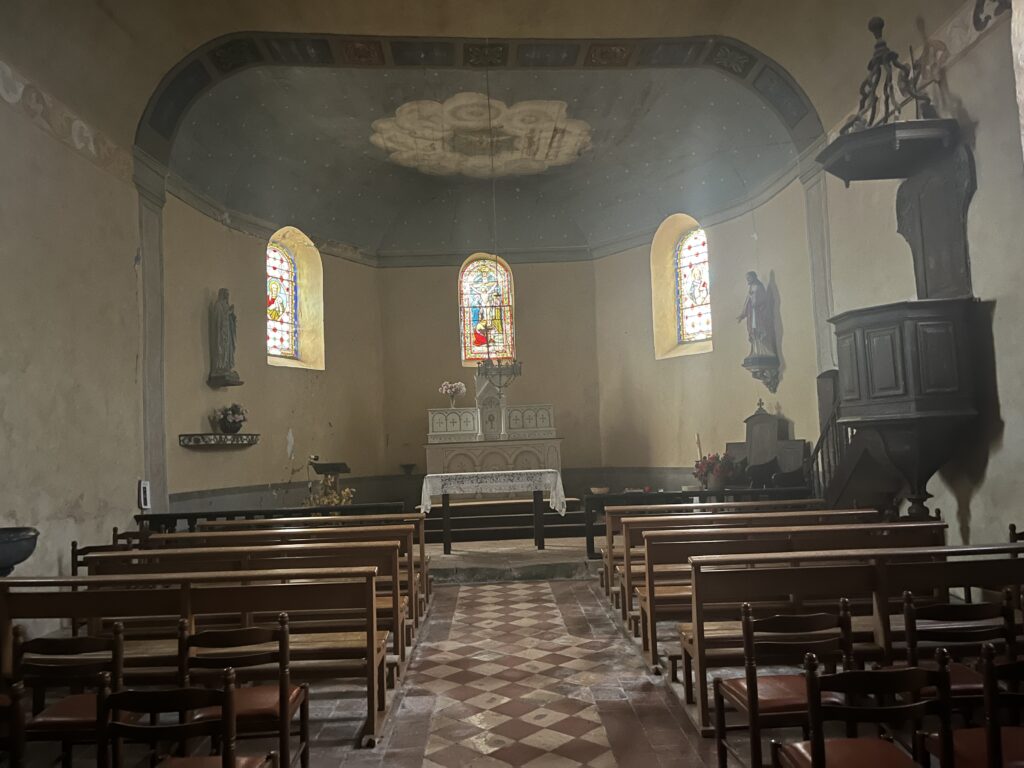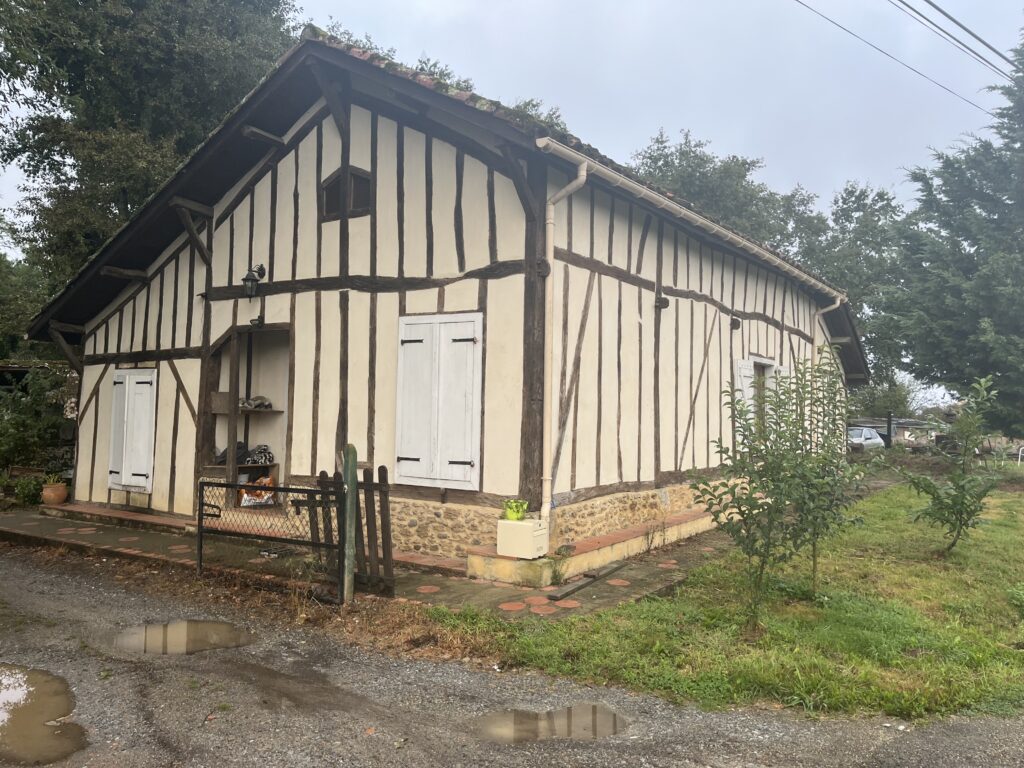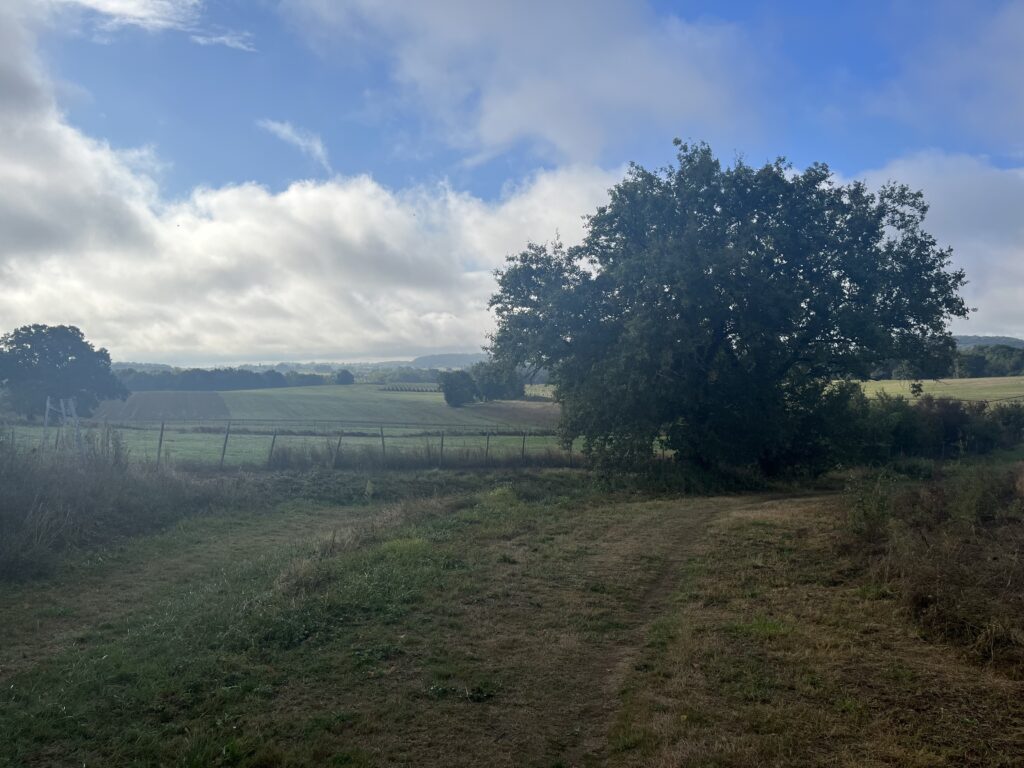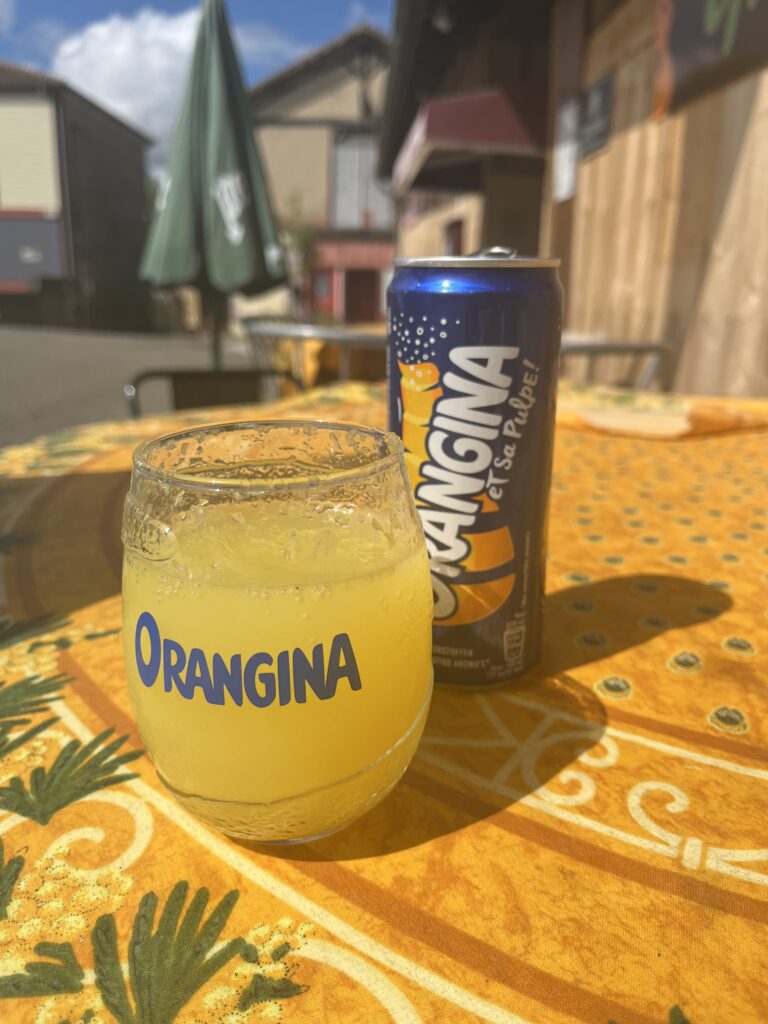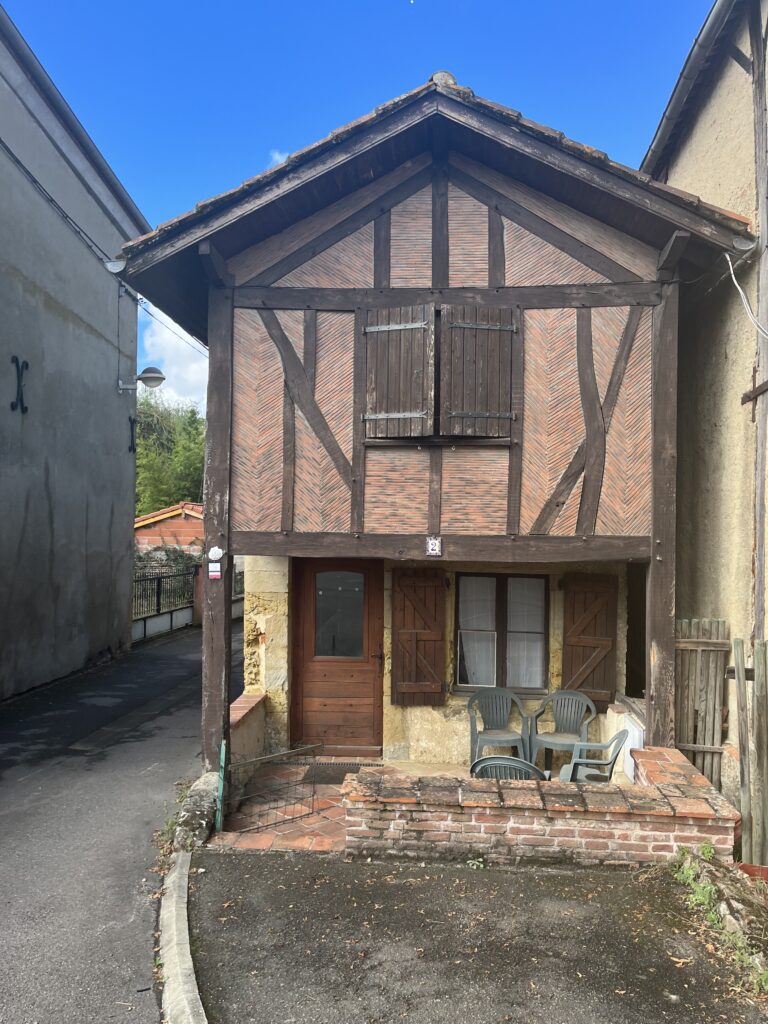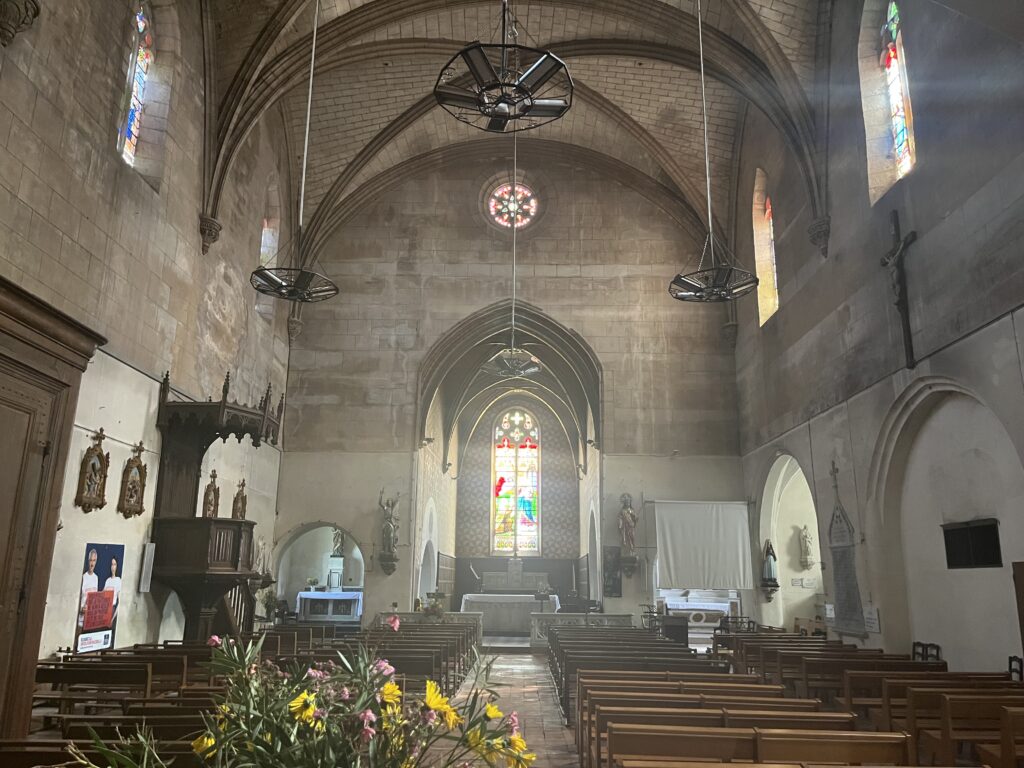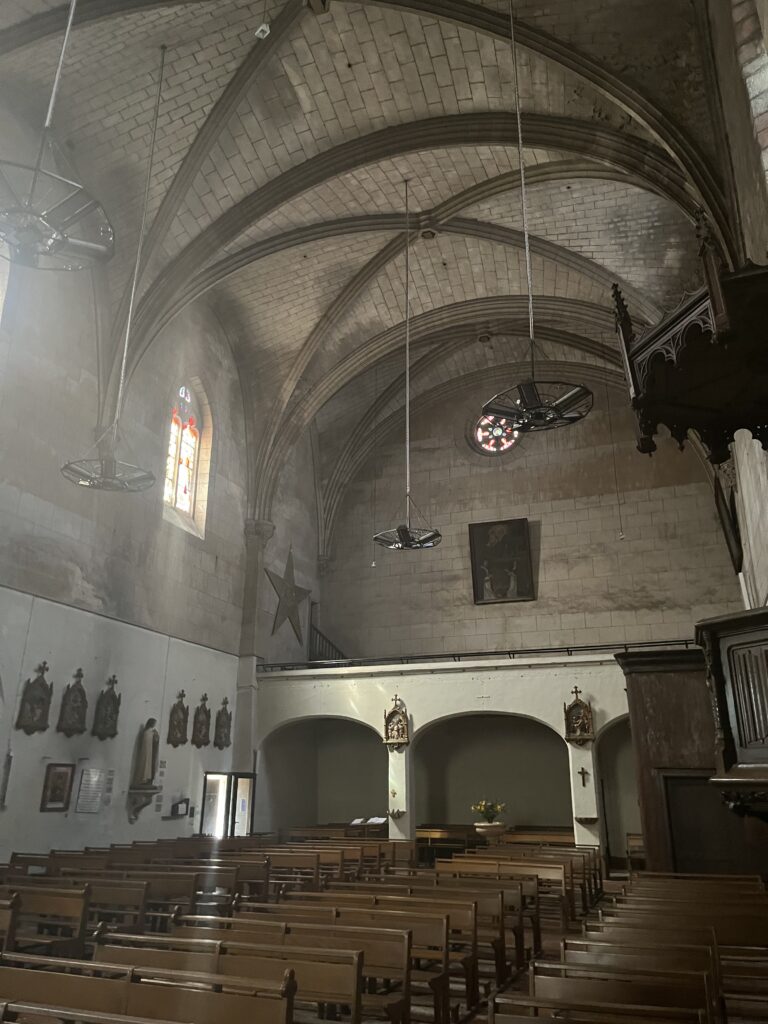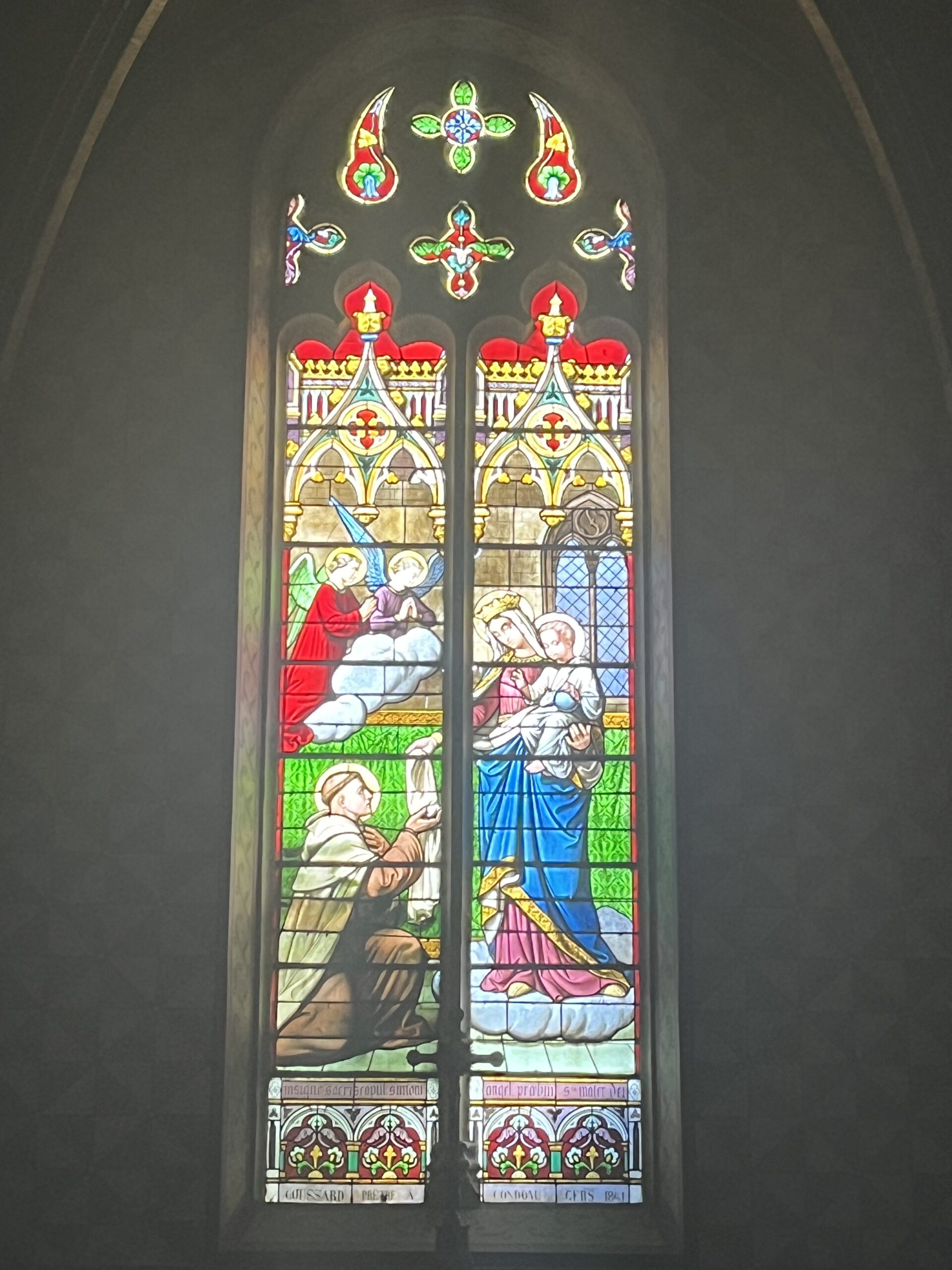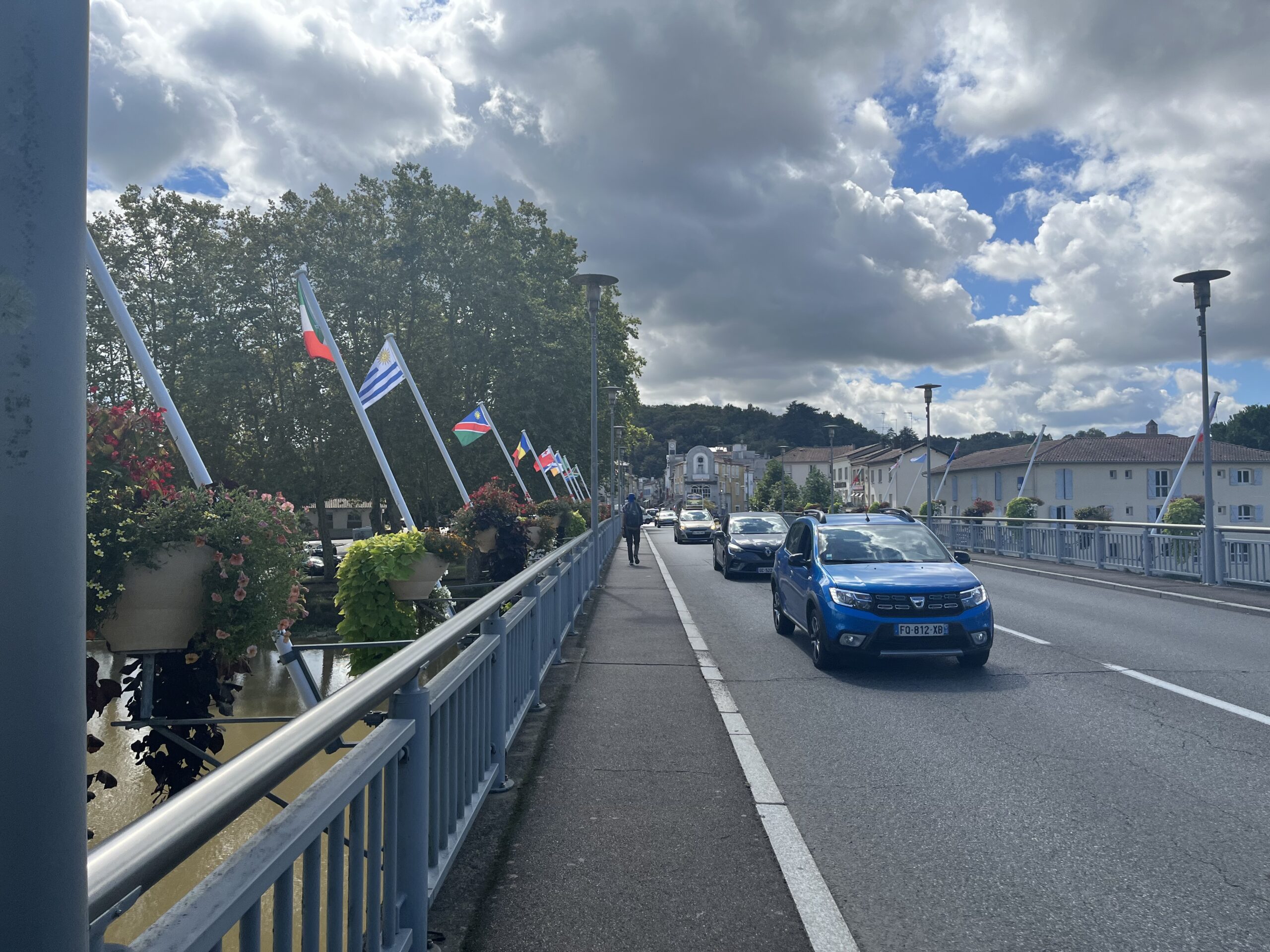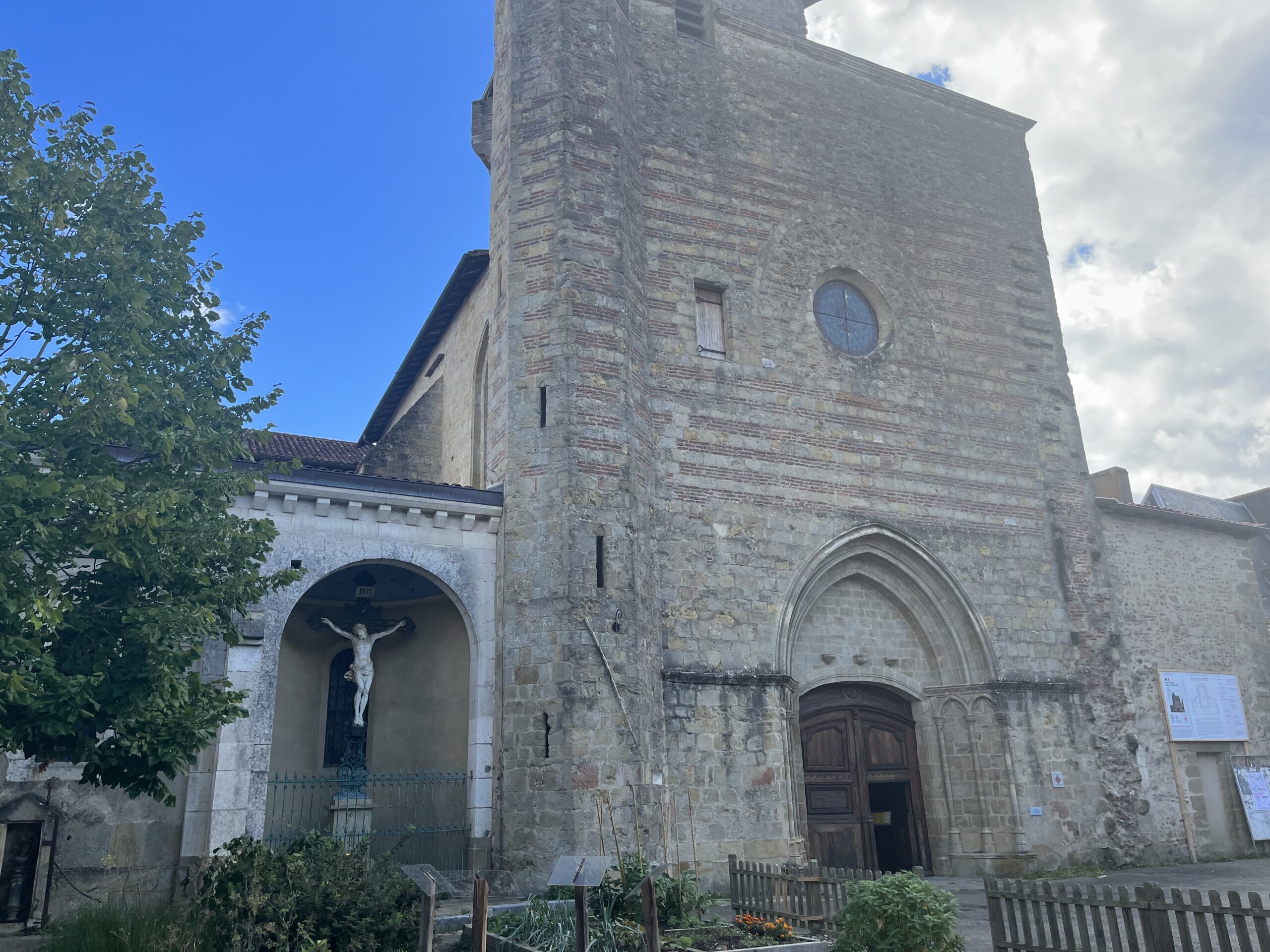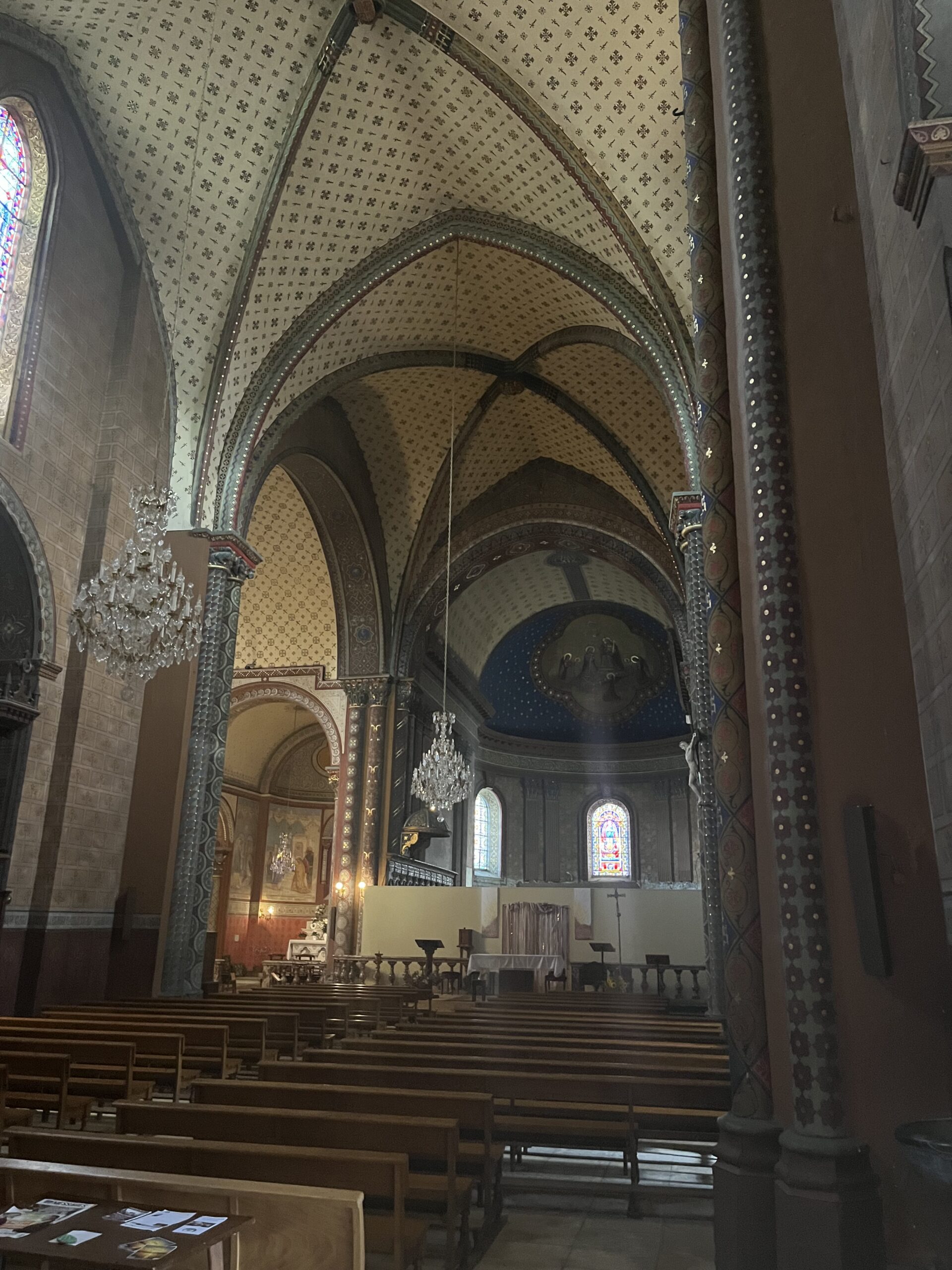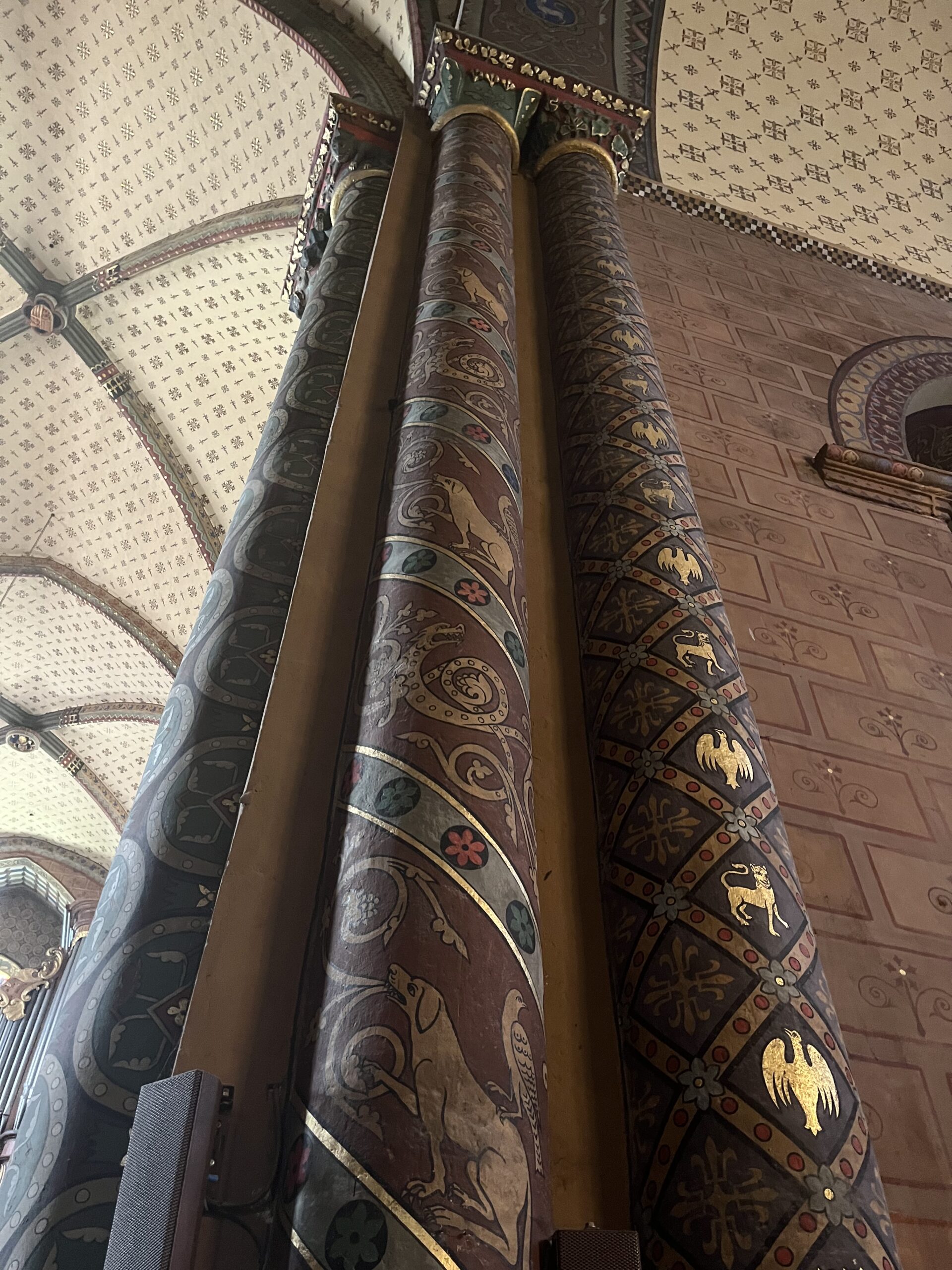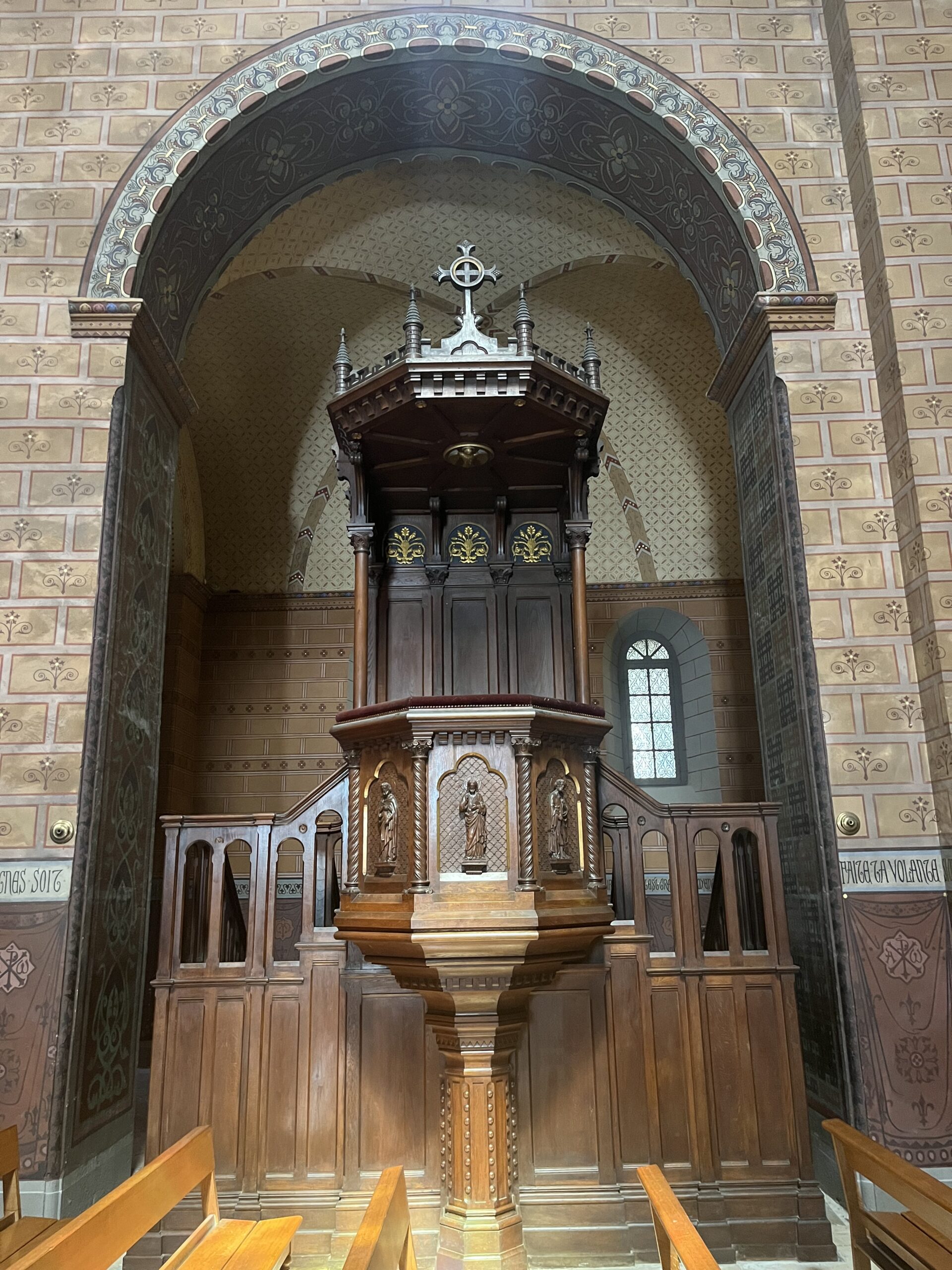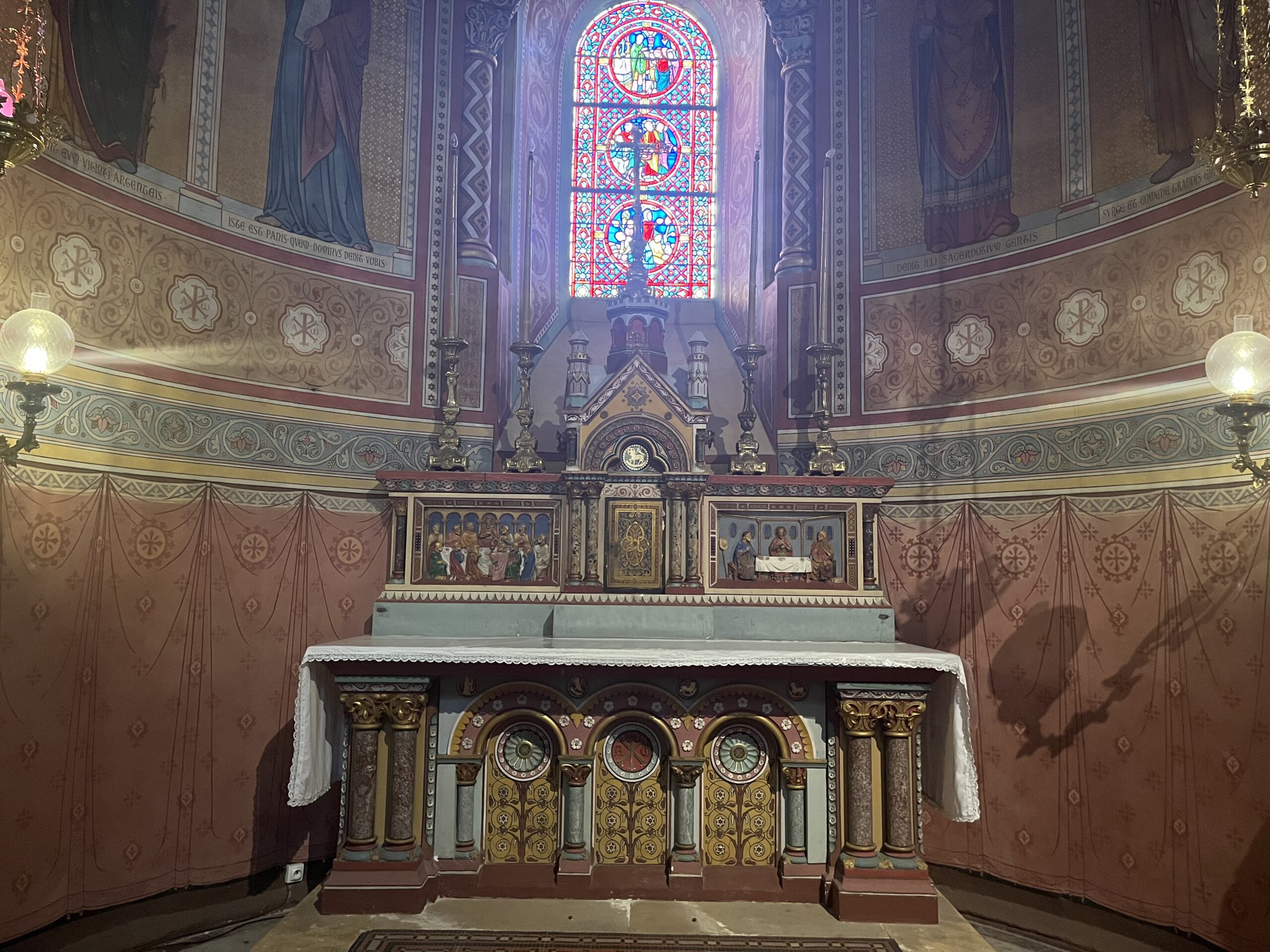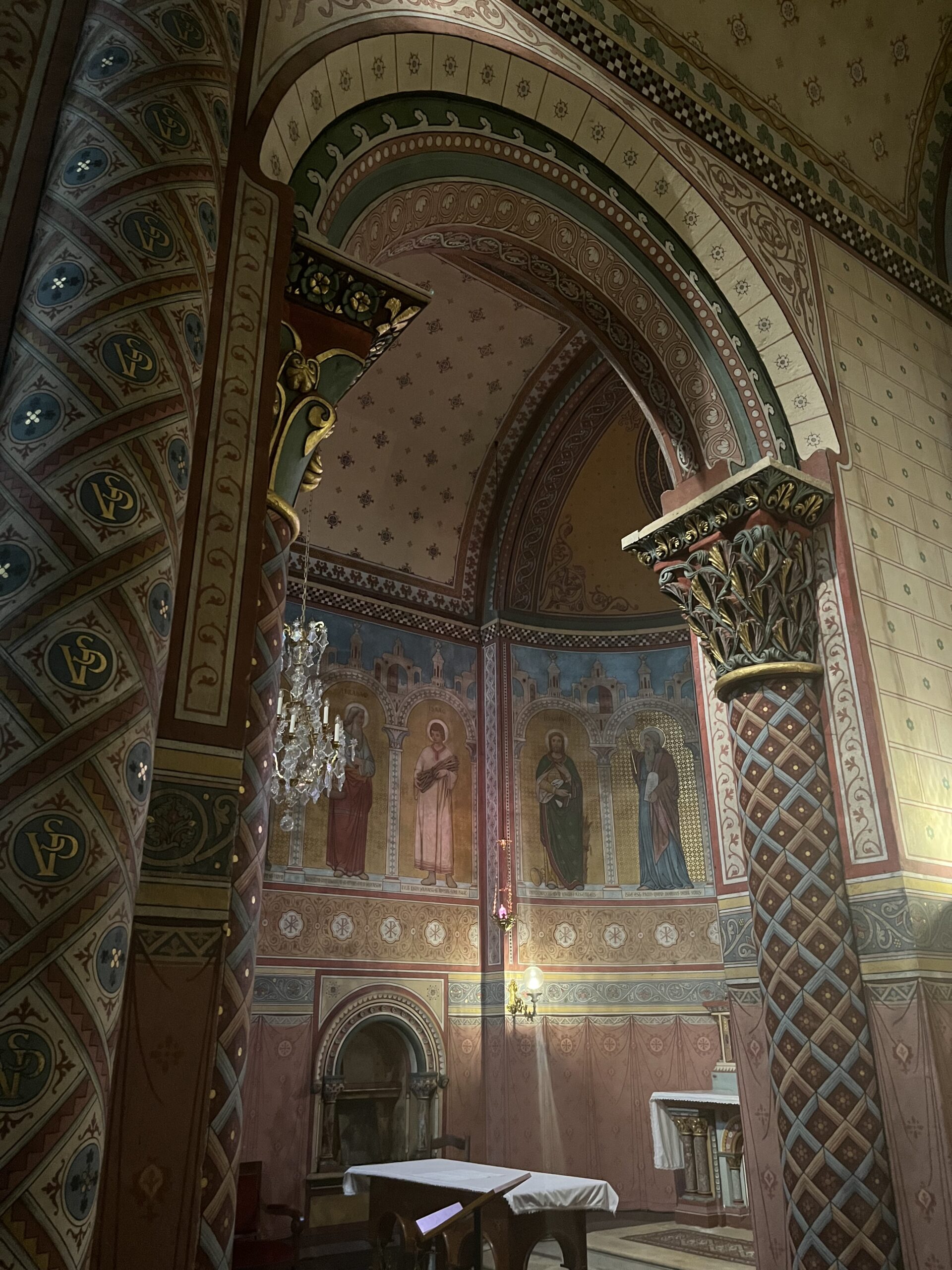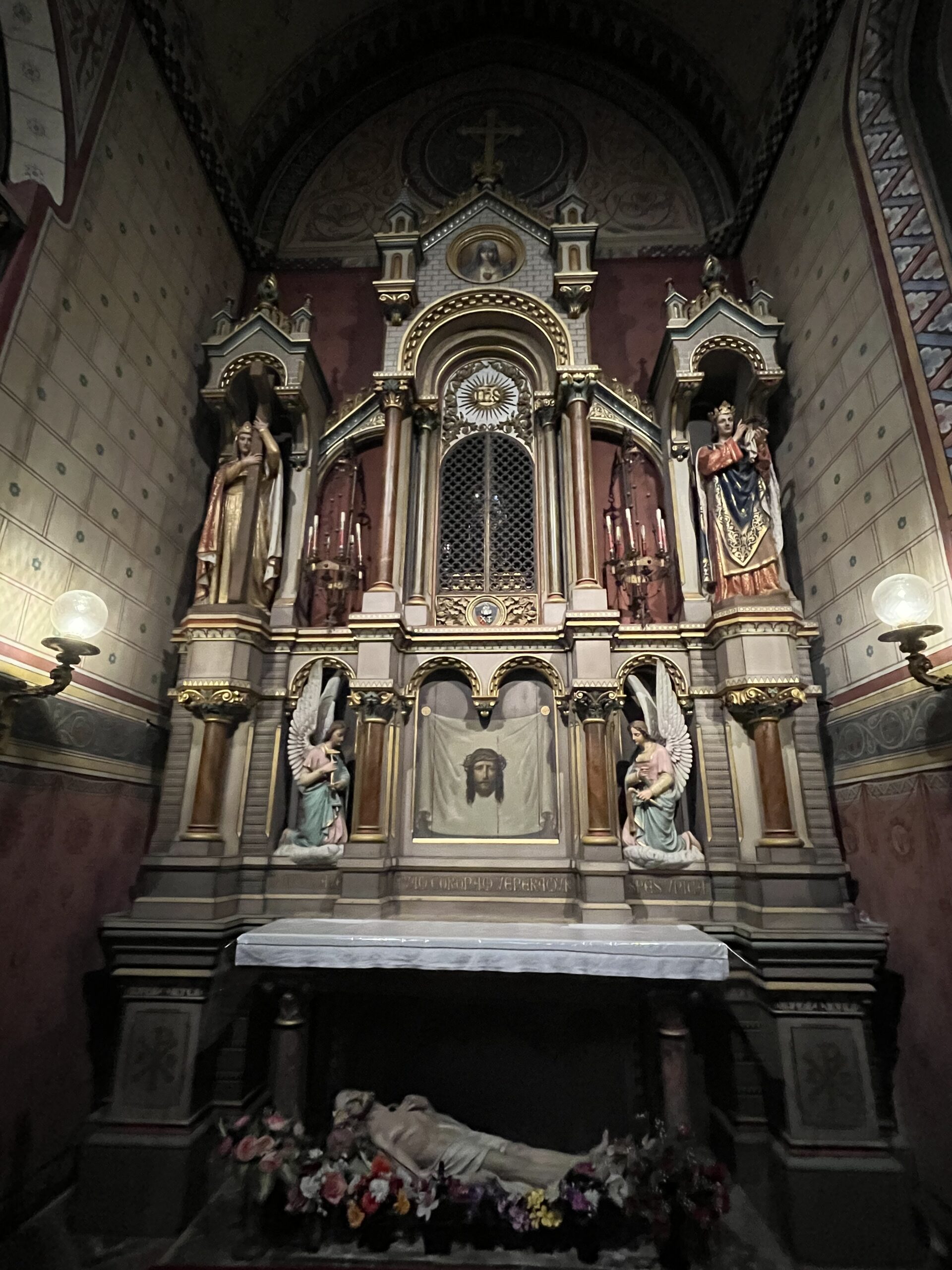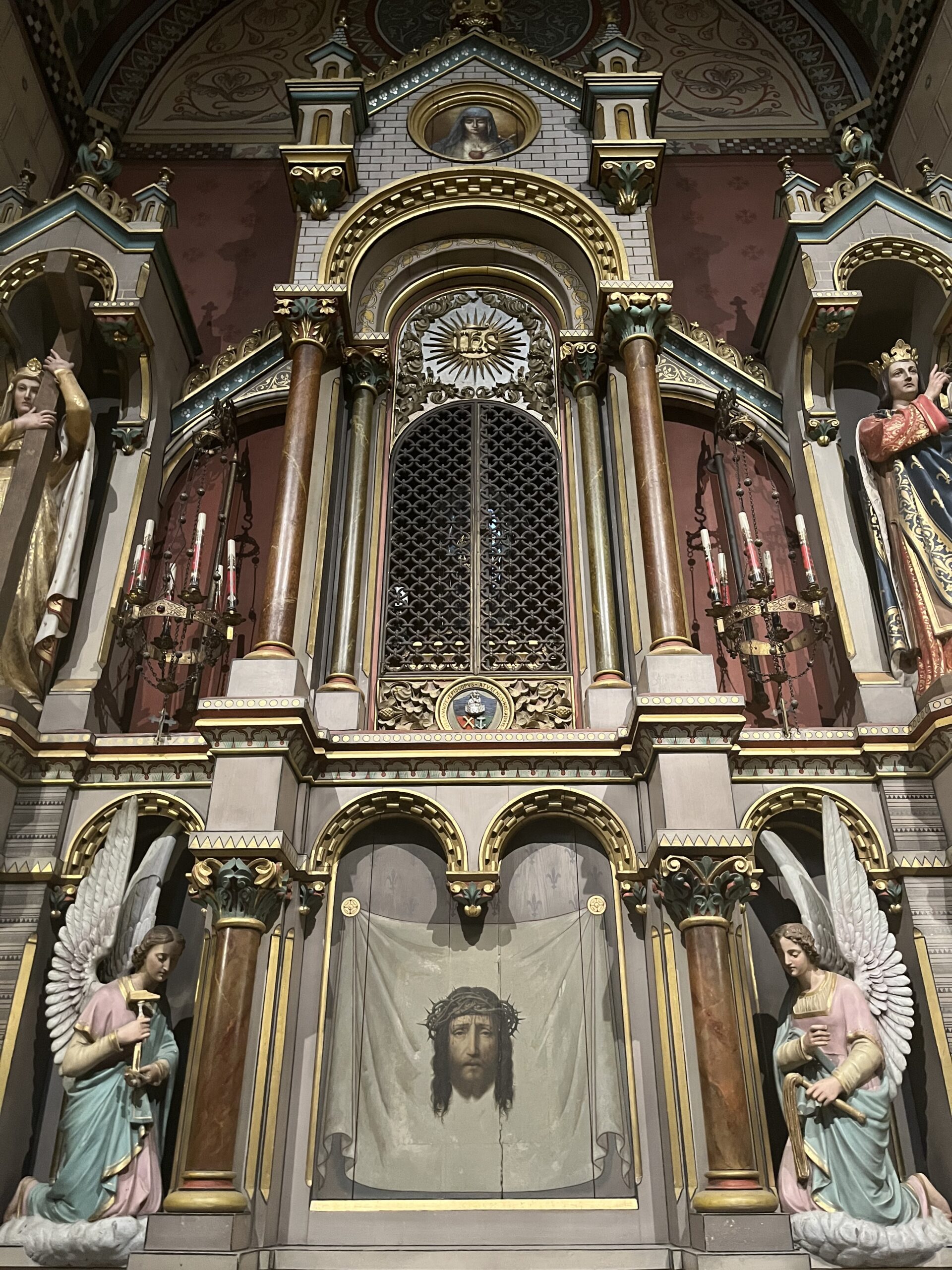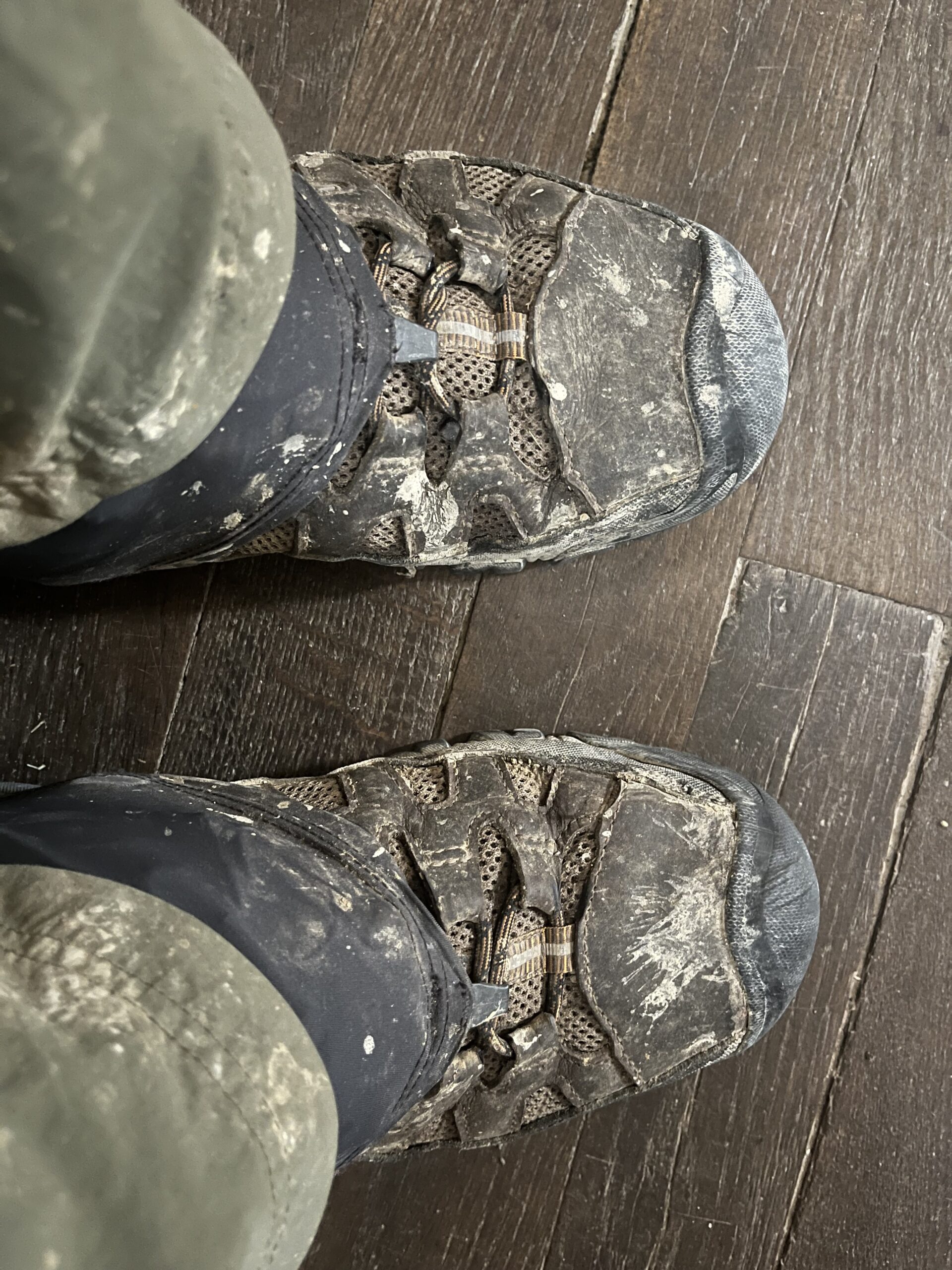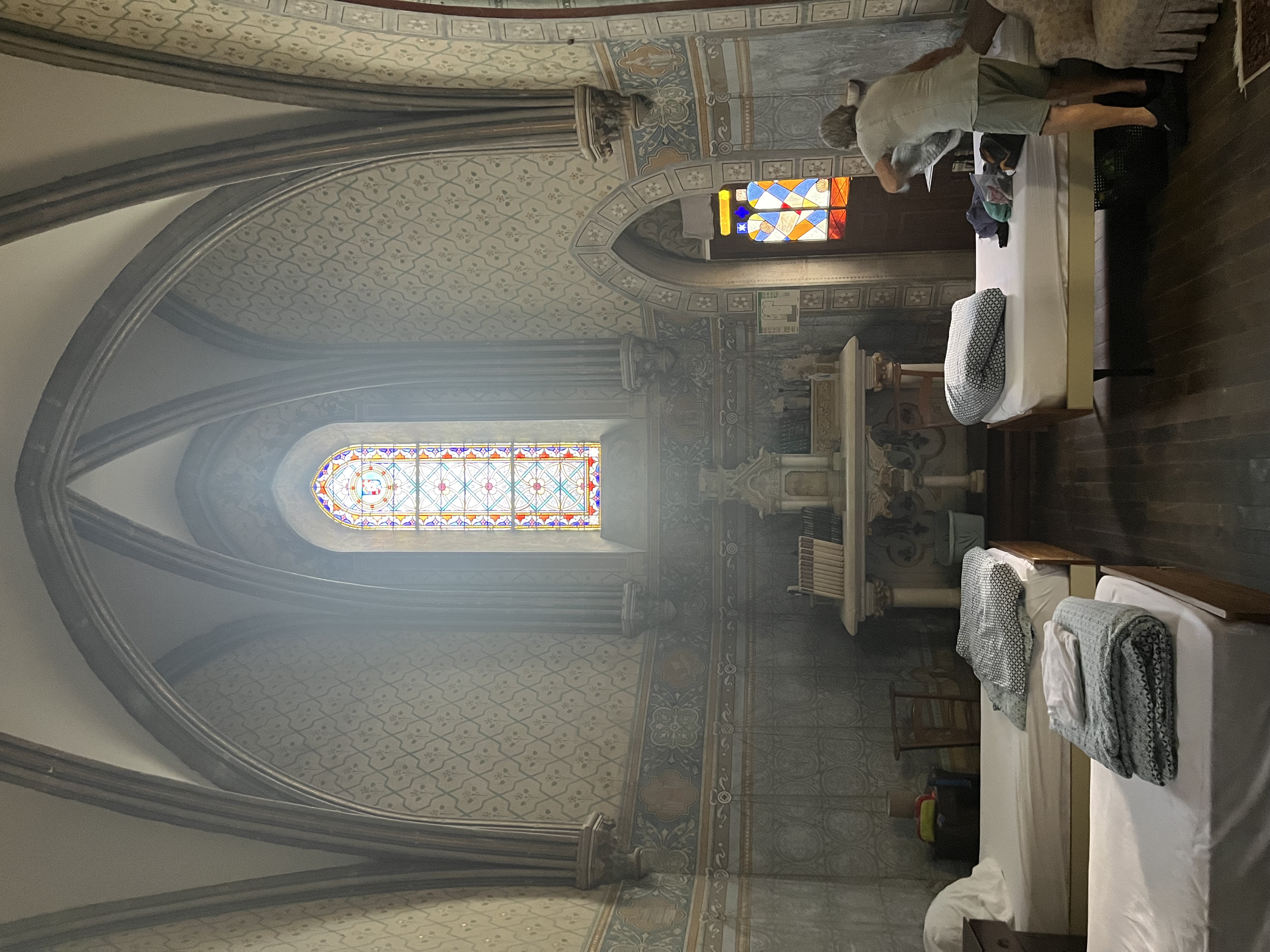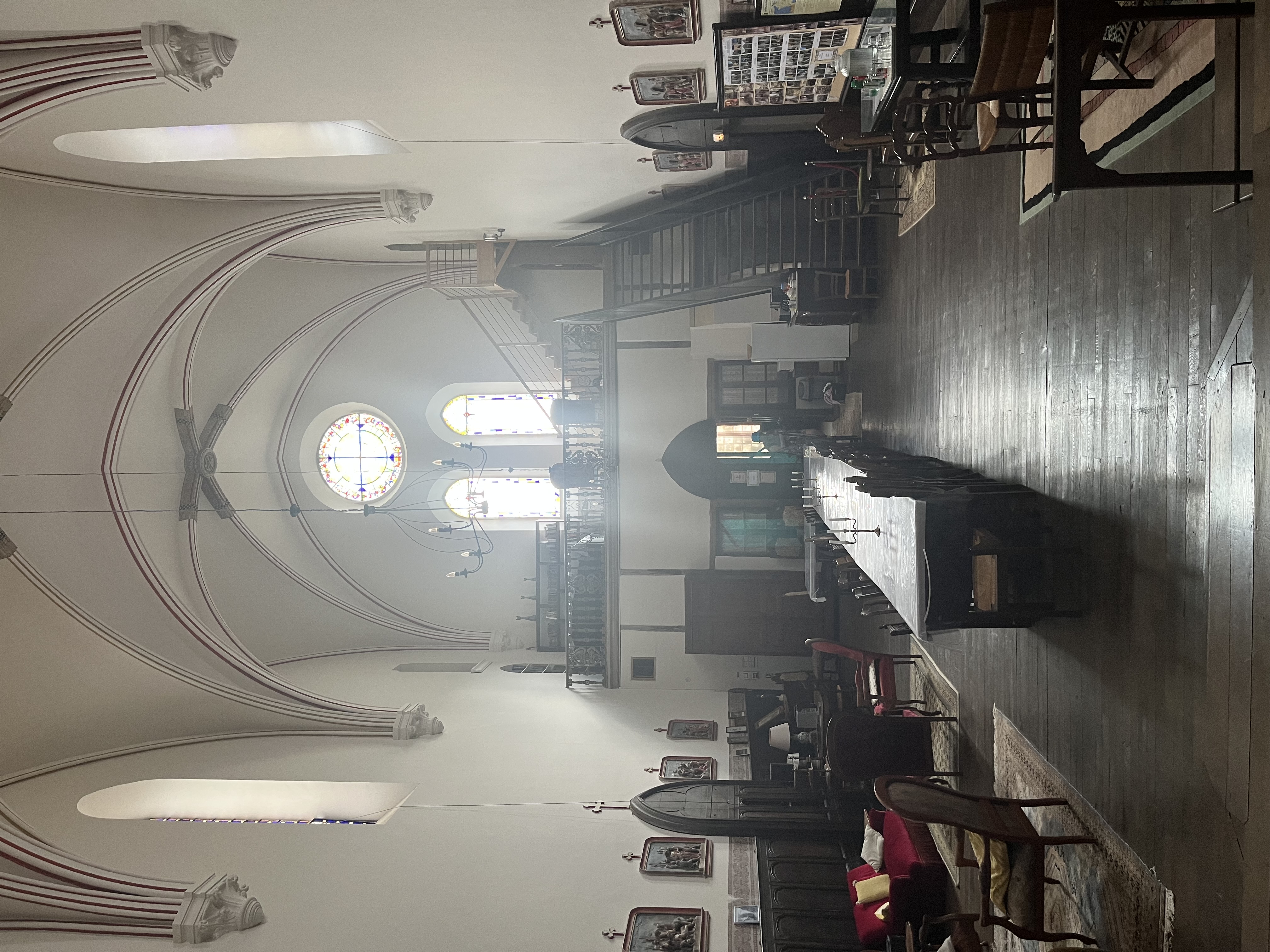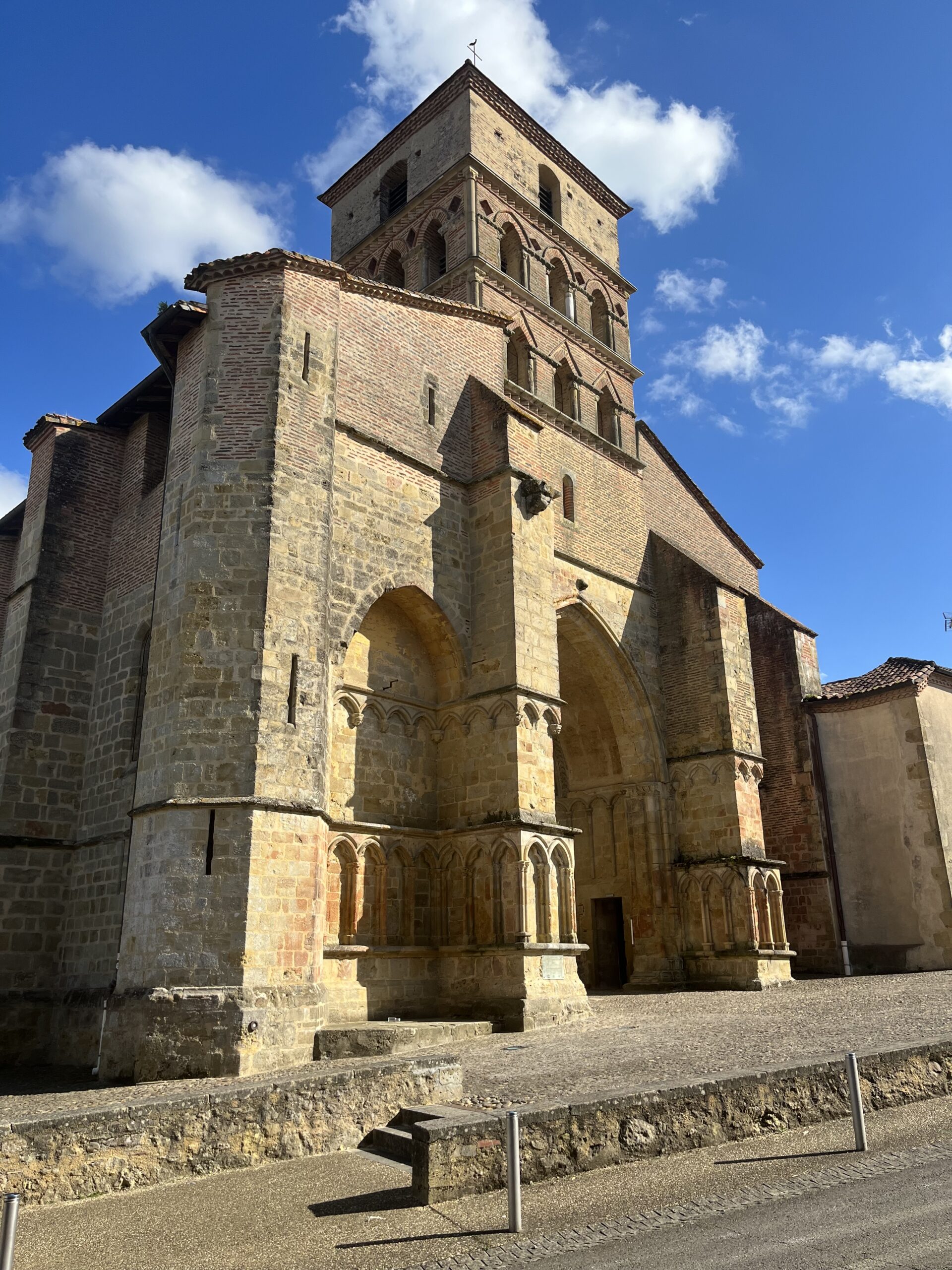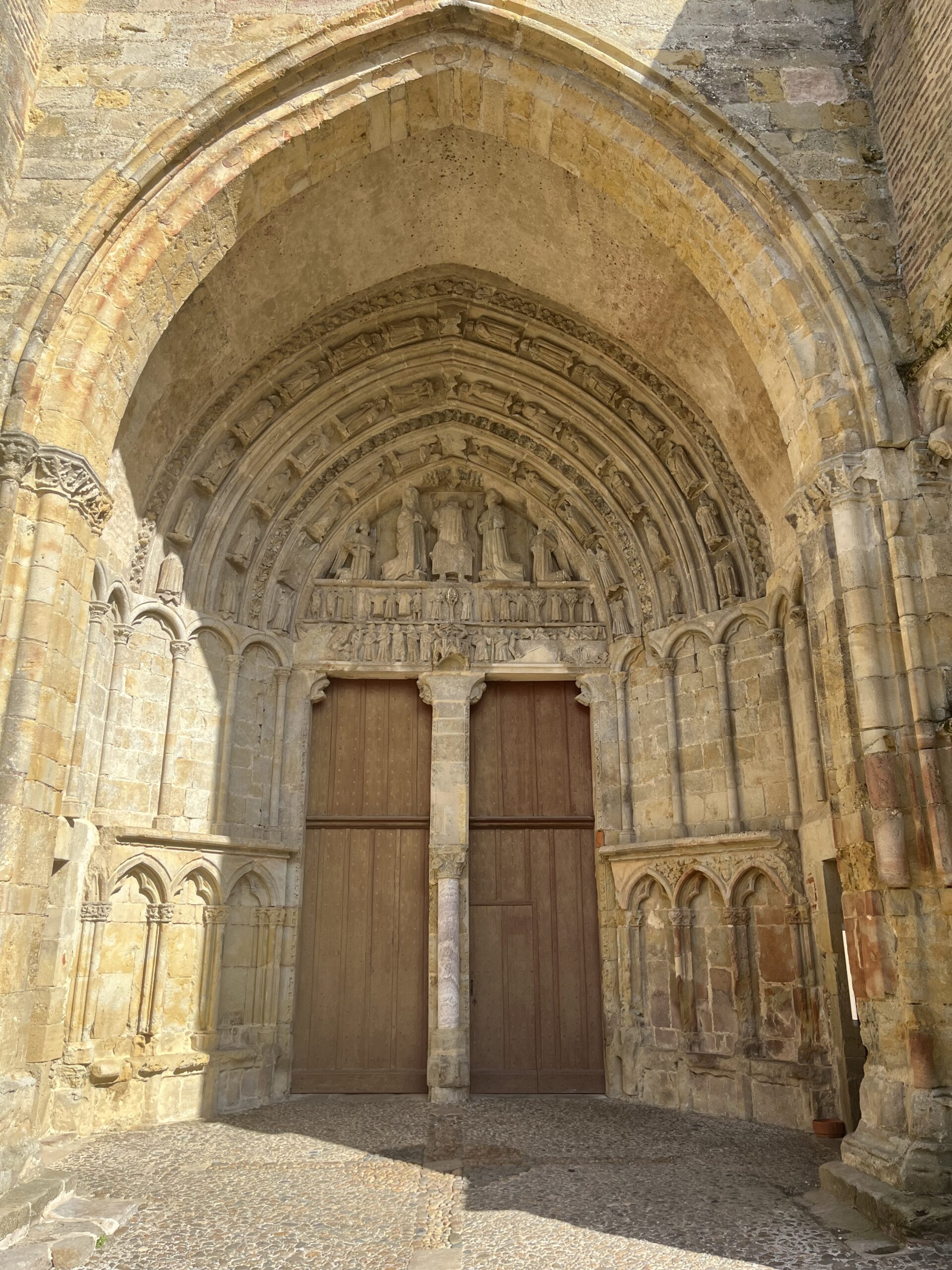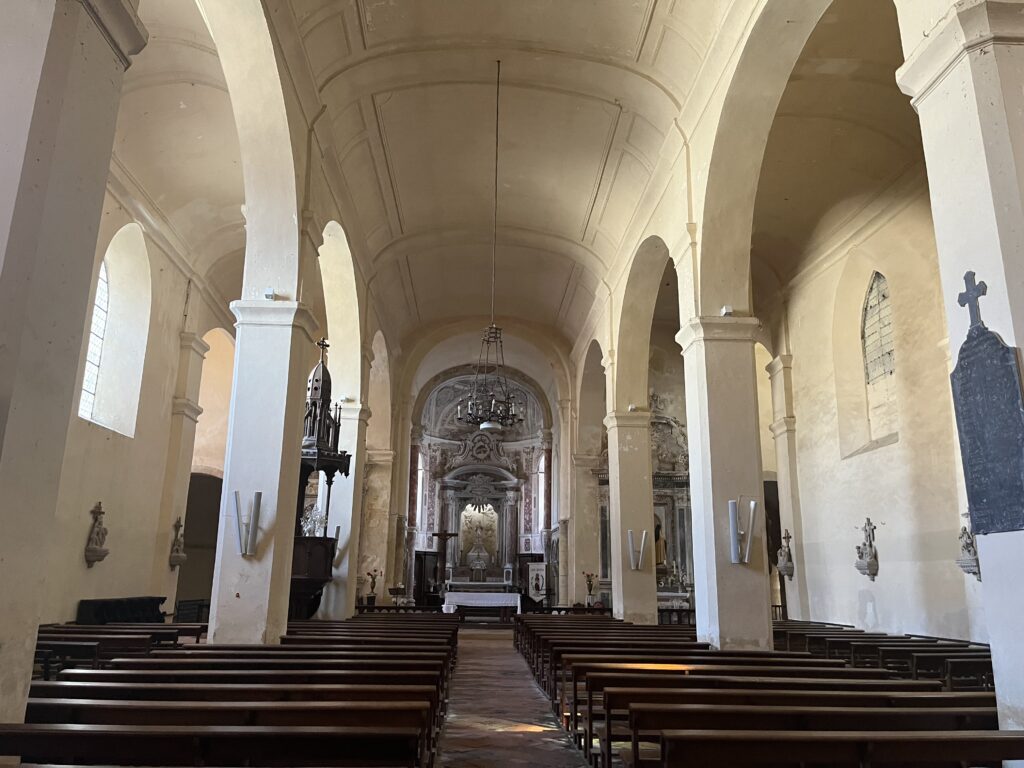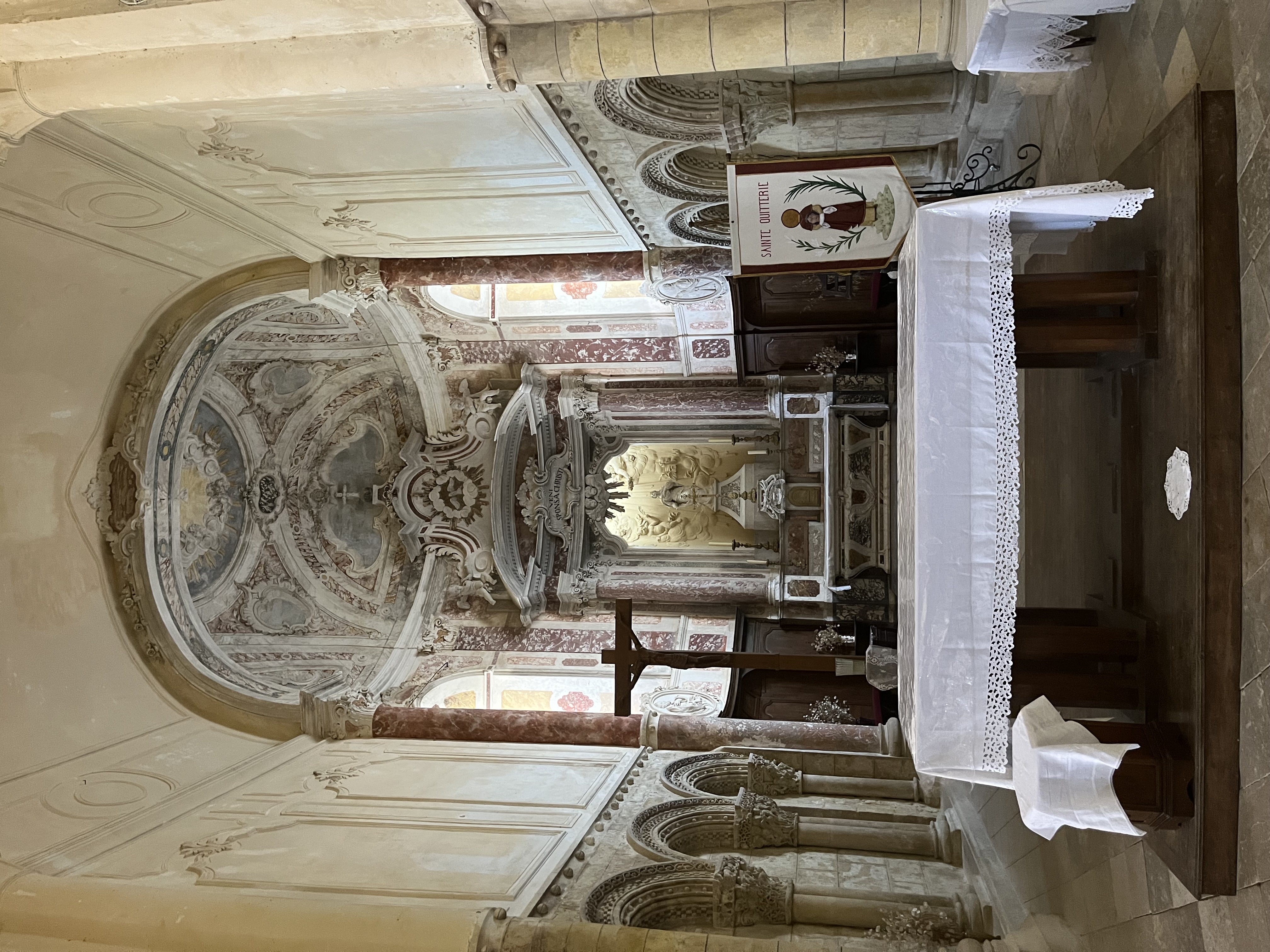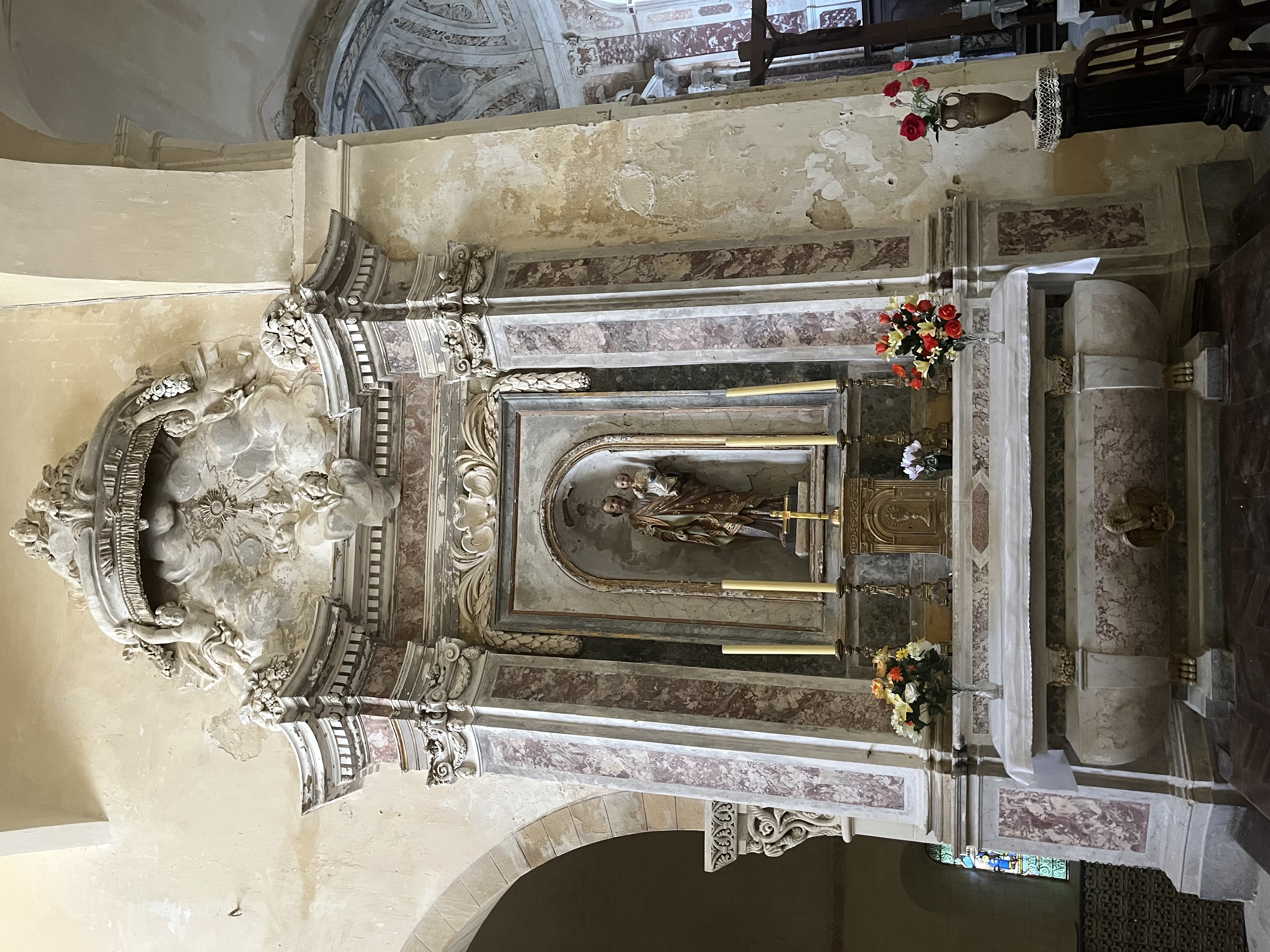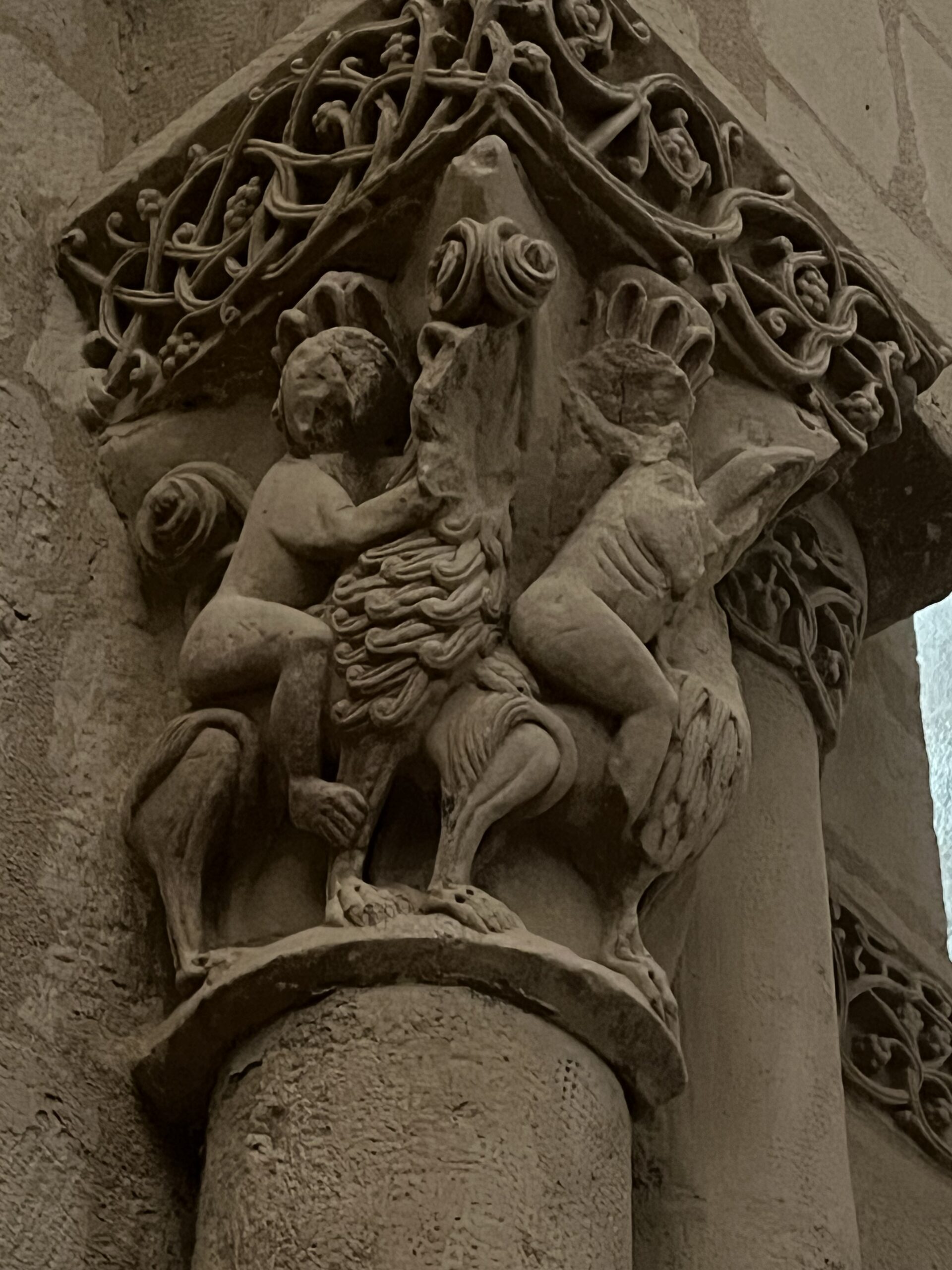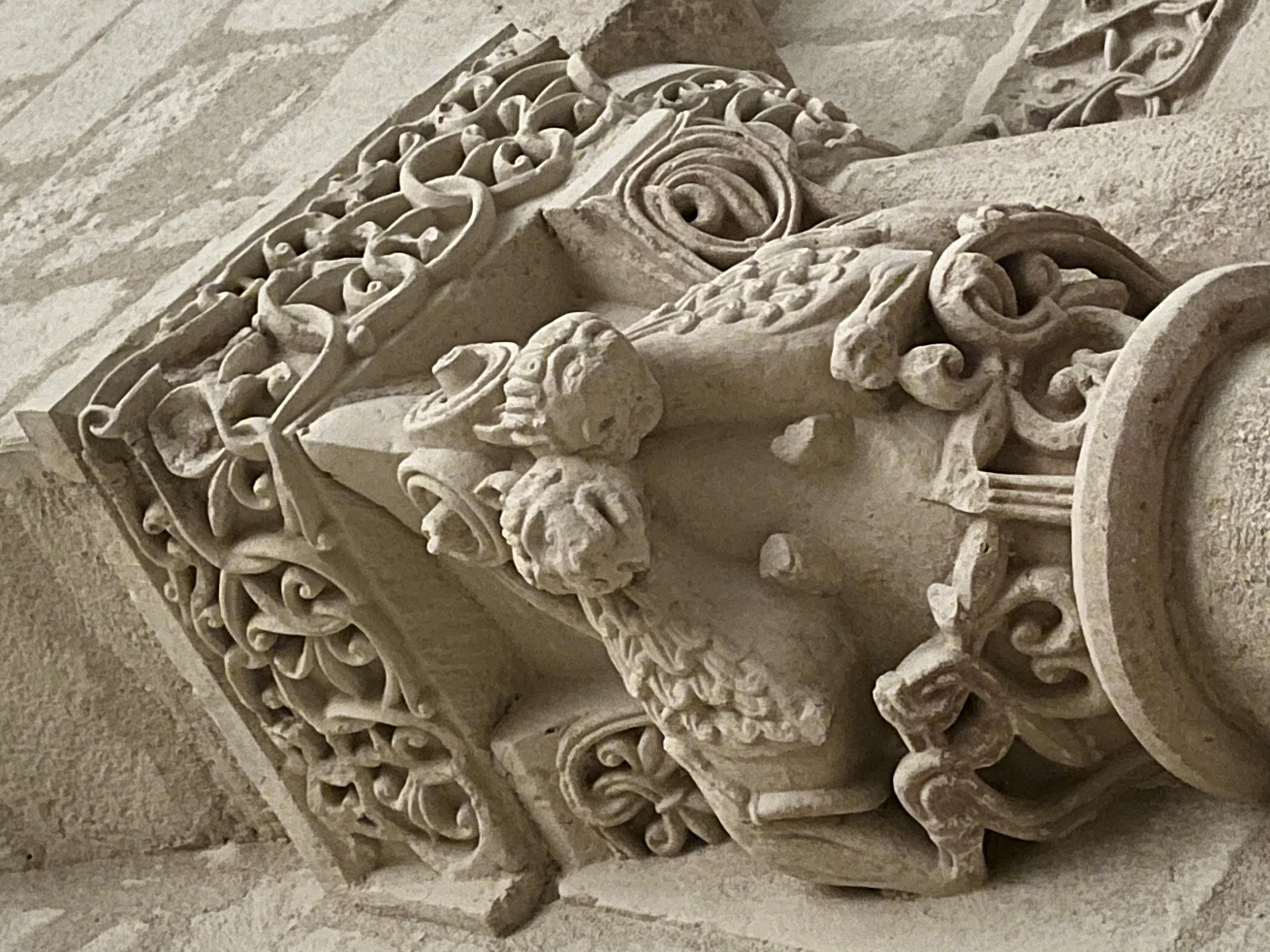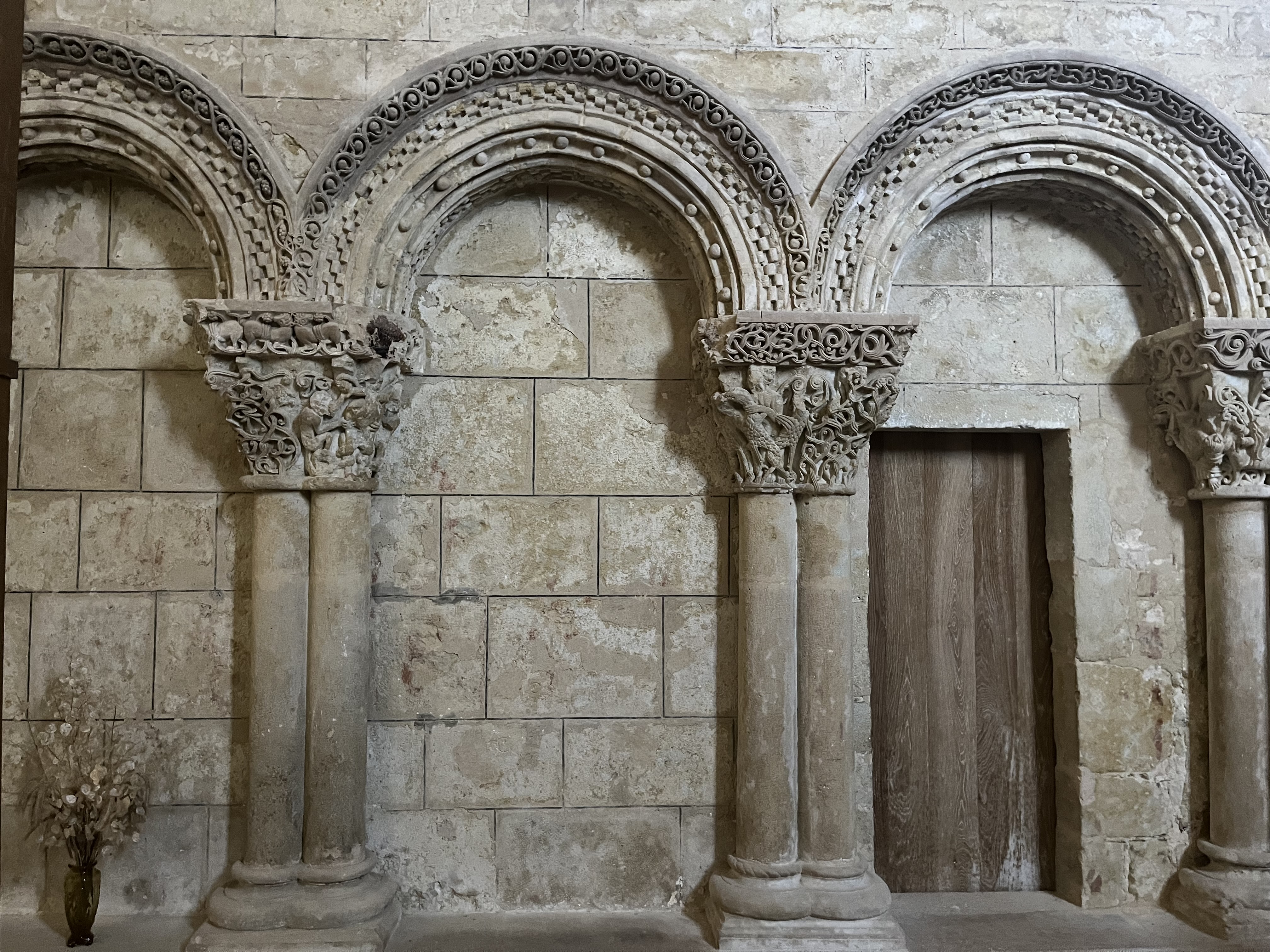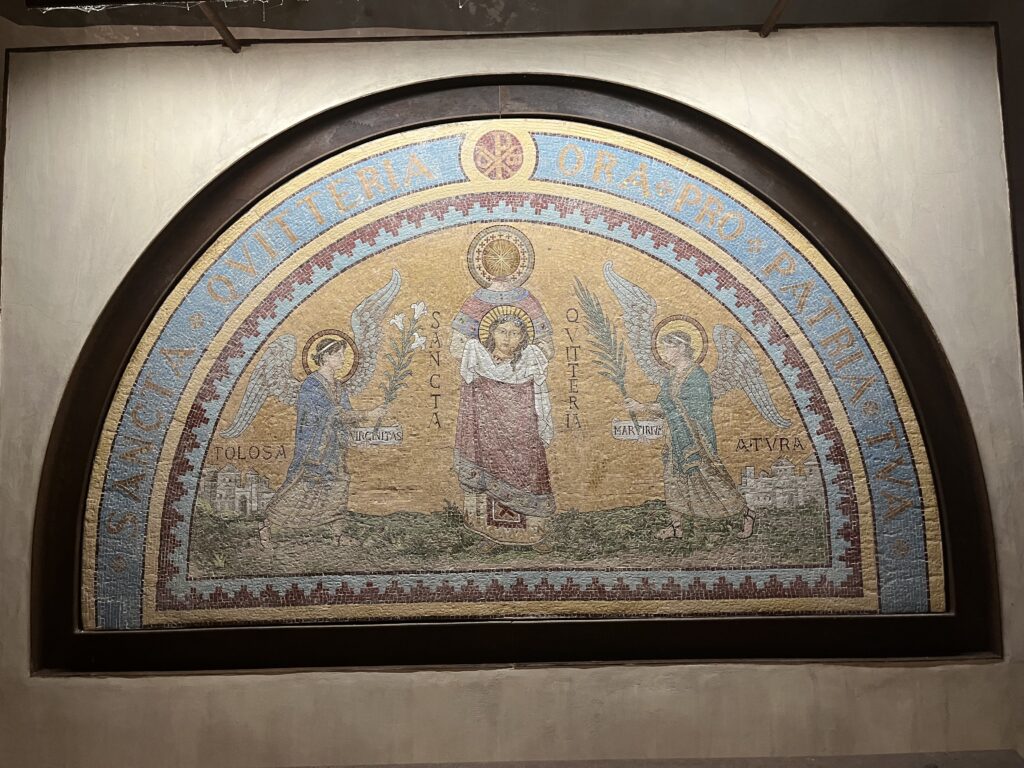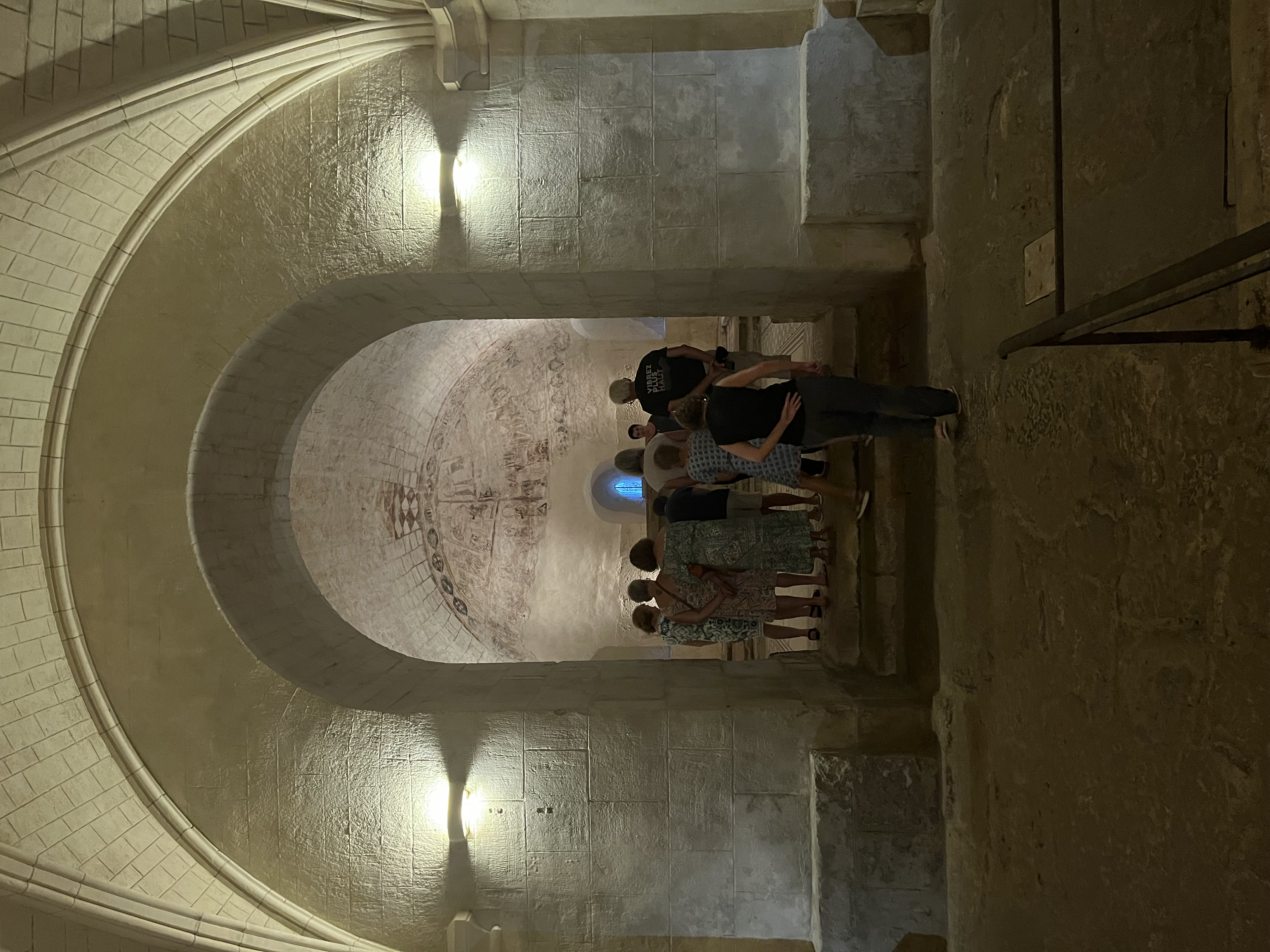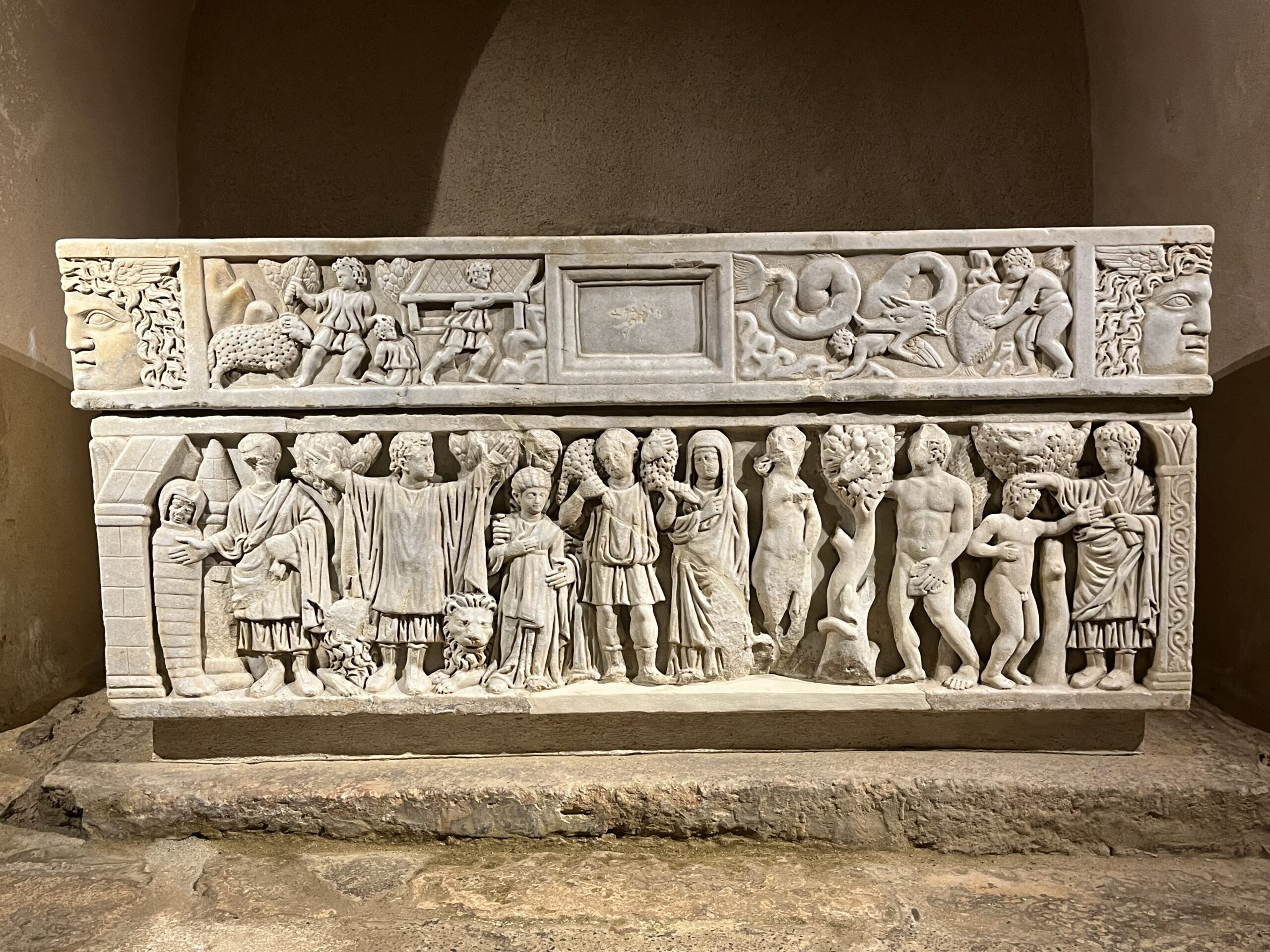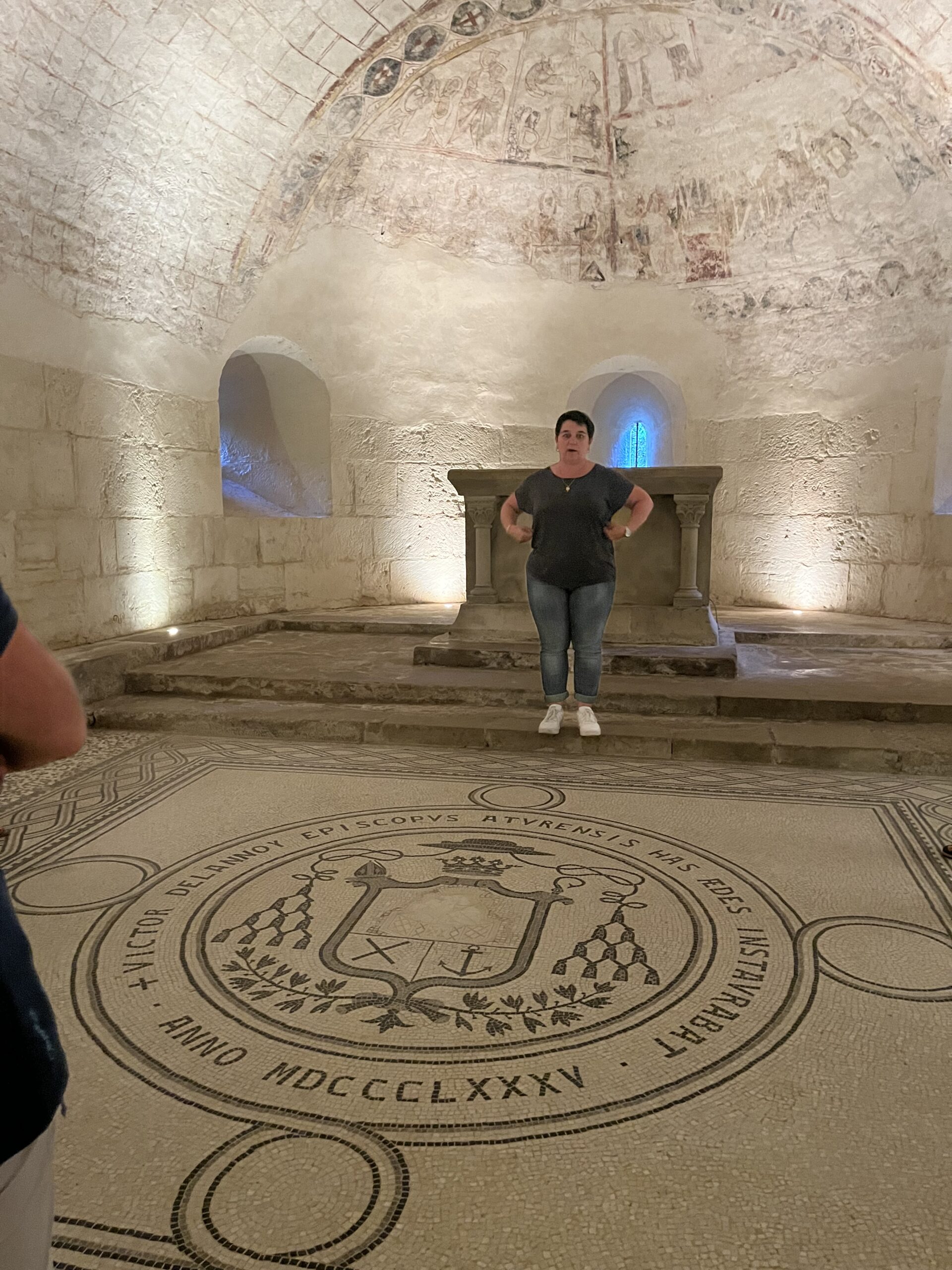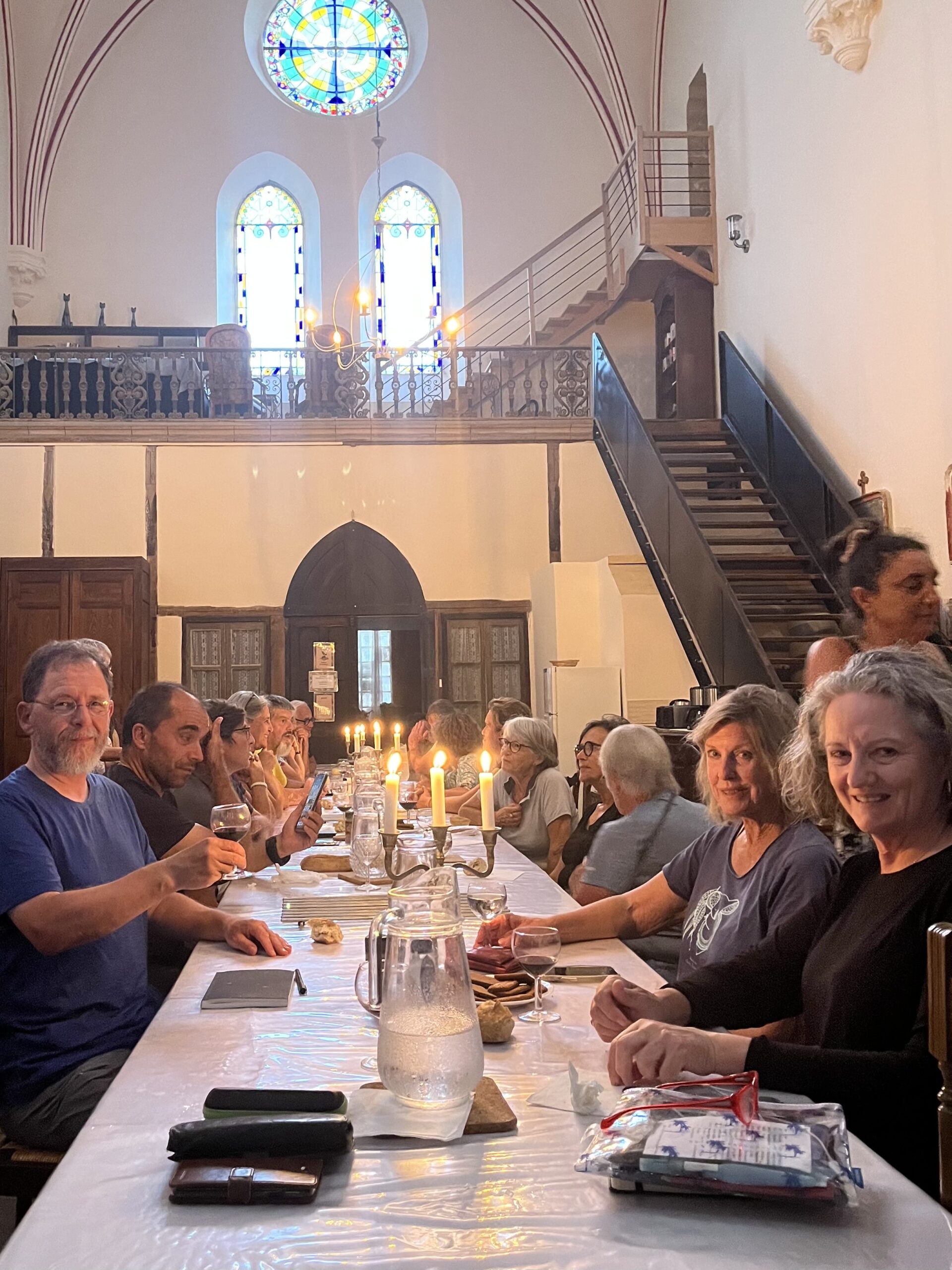Via Podiensis: Romanesque Echoes
Yesterday, I broke out my rain jacket for the first time in France. I wore it to the grocery, and then to my trip to the center of Nogaro.
I returned to the church of Saint Nicholas. It is a solid Romanesque structure with enormous supporting pillars. It projects a feeling of strength, solidity, and permanence. The church was consecrated in 1060 by an archbishop who was later declared a saint (Saint Austin of Auch). It has clearly seen some damage and repair since, but the diocese and parishioners are working together in a campaign to restore and conserve the building.
Much of the original decoration, unfortunately, was destroyed in wars over the centuries, particularly by a protestant attack in the 16th century. Some of the sculpture remains, particularly on the capitals of the pillars, as well as traces of the original frescoes.
I am not a fan of the modern style used in the current altar and furnishings. They seem completely out of place there.
I would’ve liked to seen more of the interior, but it was quite dark. The lights were motion-activated, and they only functioned some of the time. It certainly made praying Vespers there challenging.
After a rough night, I was up early and was able to enjoy a leisurely breakfast before leaving the gîte at about 6:45 AM. It was still dark, but since I was confident about the first kilometer or so of my route, having walked twice yesterday, I felt safe in setting out. The air was temperate, but very muggy. It rained again last night and this morning. This time there were puddles everywhere.
The weather reports were mixed, so I left with my poncho draped across my backpack. I felt strong this morning, even if my shadow on the sidewalk made me look like a hunchback in a cowboy hat.
Today was going to be a 27 kilometer day, but there was literally no food or water support. My pack was heavy with extra food and water. Vendors were setting up for market day as I passed by.
At some point, I ran out of sidewalk and was roadwalking out of town in the pre-dawn light. Despite the extra weight, my pack felt good this morning. there was a lot of traffic on this road, so I kept my flashlight on even though I didn’t really need it. And then, the Camino headed down a muddy side road, and I very much did need it. At least for a while.
The day dawned gray and wet. There was occasional drizzle, but constant mud, slippery and slimy. And there was still plenty of debris littering the ground from the thunderstorm the other night. All in all, this morning was about paying careful attention to my environment and to where I placed my feet for every step.
All effort was spent on the path in front of me, and I wasn’t really paying a whole lot of attention to the scenery around me. Some days are like that.
I do want to make one thing clear, however. Never once did I wish for a return to the 90° and clear days of the past weeks. And those parts of the morning where I was a roadwalking on asphalt were actually quite pleasant for a change. Except for the traffic, obviously.
At about 8:45 AM, I came upon a charming little village church in Lanne-Soubiran. I think this is the village where Jacopo planned to stay last night. I offered a prayer and lit a candle for the intentions of the Camino in the chapel, before moving on.
I think it was about this point that it began to dawn on me that I had spent most of the day so far in that same green forest tunnel I’ve come to know and love over the past few days.
By about 9:45 AM, I was halfway through the day’s kilometers and looking for a likely spot for lunch.
Important Camino note: lunch does not necessarily occur at the midpoint of the day; lunch may instead occur at the midpoint of the day’s walk.
By now I was a roadwalking through vineyards, and farms. No sign of a picnic table, or even a flat spot.
Ten minutes later, I passed a sign telling me that in 30 minutes or so there was a village with a picnic area. I snacked on some dried fruit and continued walking. The sun was out by now, and it was looking to be a beautiful day.
Now it was out into the open fields.
Eventually, I passed several little knots of houses (and one sleeping dog), but nothing that resembled a village. At about 10:25 AM, I passed a sign proudly proclaiming that I had entered the village of Lelin-Lapujolle, but it looked more like a stand of trees with a steeple on a nearby hill.
It was one of those planned forests, with the trees all lined up in neat little rows.
I climbed the hill to the church, and by 10:30 I was making a sandwich at a picnic table overlooking a tennis court. I had walked just over 17 km, and there was probably another 10 km to go.
I attempted to visit the church, but it was locked. I spent entirely too much time enjoying my sandwich, and I wasn’t on the road until 11. It was hot and sunny when I left the picnic spot, so I stowed my poncho and put up my umbrella. Within less than half a kilometer, it started raining. Turns out umbrellas are pretty good for that, too.
It didn’t rain for long.
Meanwhile, it was back to roadwalking asphalt through the wide open countryside, then forest, then wide-open countryside again.
The monotony of the after lunch walk gave me an opportunity to finally pray my rosary. Then I spent quite a bit of time in additional contemplation and then just sort of rumination.
After kilometers of open fields, the Camino entered the little village of Barcelonne-du-Gers. It was about 12:50 in the afternoon, the sky was clear with white fluffy clouds, and I was feeling good.
To celebrate, I popped into the only open bar and had an Orangina and rested my feet a bit. The village turned out to be adorable, with some wonderful examples of beautiful half-timber houses.
I visited the local parish church. I could not have been more surprised. I literally don’t know what to make of it, unless it was part of a much larger structure once. The sanctuary and side altars seem to argue for a triple nave church with two additional chapels on the south side. One of those chapels had been walled up, but that wasn’t the weird thing.
No, the main body of the church was the weirdest thing. It was one large space, a single nave that extended from the line of the sanctuary to the choir loft at the back of the church. This was supported by three arches that matched the proportions at the other end of the church, possibly also indicating three naves.
What was this building originally? And how did it come to be the way it is now? Fascinating stuff.
I offered a prayer in this fascinating little place, with it sanctuary stained glass window showing the Blessed Virgin giving the scapular to Saint Simon Stock.
And then it was back on the road. More roadwalking had not been part of my agenda today, but you take what you get.
The village blended seamlessly into suburban housing, even if there was a field of harvested sunflowers on the other side of the road. After a couple of turns, the landscape became more and more urban. It began to occur to me that perhaps I had already entered the city without realizing it.
I crossed the bridge over the River L’Adour at about 1:50 in the afternoon, which brought me to the city center of Aire-sur-l’Adour.
First, I made my visit to the Cathedral of Saint Jean Baptiste. Built originally in the 12th century, and enlarged and restored through the 19th century, it is currently undergoing another major restoration.
It is a magnificent structure. Architecturally, it is clearly late Romanesque at its inception, but there are many Gothic elements, and I’m sure the interior decoration dates to the 19th century. It is colorful and vibrant. Unfortunately, the entire sanctuary and choir area is partially walled off as a result of restoration and construction work.
There are four exquisite chapels in line with the main sanctuary, and all of them are spectacular in their own way.
Of particular interest is the Chapel of the Holy Relics, which is in itself a meditation on the Passion of Christ, and which contains a relic of the True Cross and a Holy Thorn. As you might imagine, I tarried here in prayer. It is a beautiful place, and was for me an intense experience to be there.
There are numerous small shrines throughout the cathedral. There’s also a lovely little baptistery near the doors.
From here, I struck out to find my gîte at the Ursuline convent. As it turns out, it’s actually the deconsecrated chapel of a former Ursuline convent. Apparently the place had basically been abandoned in the 1960s and had become home to squatters and vandals. Someone bought it and turned it into a gîte in the mid 1970s.
The altars are largely still in place, but the altar stones, or in some cases simply the relics, have been removed. Many of them are damaged, and it looks like they were subject to vandalism.
The place is more beautiful than many churches I’ve been.
The presence of an altar in my dorm would seem to indicate that this was a side chapel, but given its position next to the main sanctuary, complete with steps leading up to it, and the fact that there is an outside door here, I suspect this was the sacristy. Given that my primary ministry is training altar servers, it seems weirdly appropriate.
After the usual pilgrim stuff, I went across the street to the 11th century church of Sainte-Quitterie, an early Visigoth martyr whose relics are entombed here.
Clearly there have been some renovations over the centuries. The façade is Gothic, and the altars and retablos are Baroque and probably 600 years later than the basic structure of the church. Some very fine Romanesque columns and arches have however been preserved. The entire building is in serious need of restoration. There are many places where the plaster is peeling off and revealing the stone beneath.
There was a tour, including a visit to the crypt containing the Saint’s sarcophagus, but it started about half an hour late, so although I couldn’t get into the crypt, I prayed outside the door for the Saint’s intercession.
The tour was really good, and I particularly enjoyed the crypt. Not just for the Saint’s amazing carved marble sarcophagus, and not just for the opportunity to quietly pray a moment there. It was also the little chapel in the crypt directly across from the sarcophagus.
It turns out that the particular shape of a Romanesque chapel and the placement of the altar, if done with mathematical precision, provides an amazing effect. When the priest stands at the altar facing east, The sound waves of his voice are concentrated and magnified by the architecture into an astounding echo, like a natural microphone.
It really is the most amazing thing to hear. Everybody in the little tour group tried it, and every one of them had the same expression of amazement on their face when they heard their voice magnified back at them. It’s absolutely genius, and I never knew.
Date: 13 September 2023
Place: Aire-sur-l’Adour
Today started: Nogaro
Today’s Photos!
